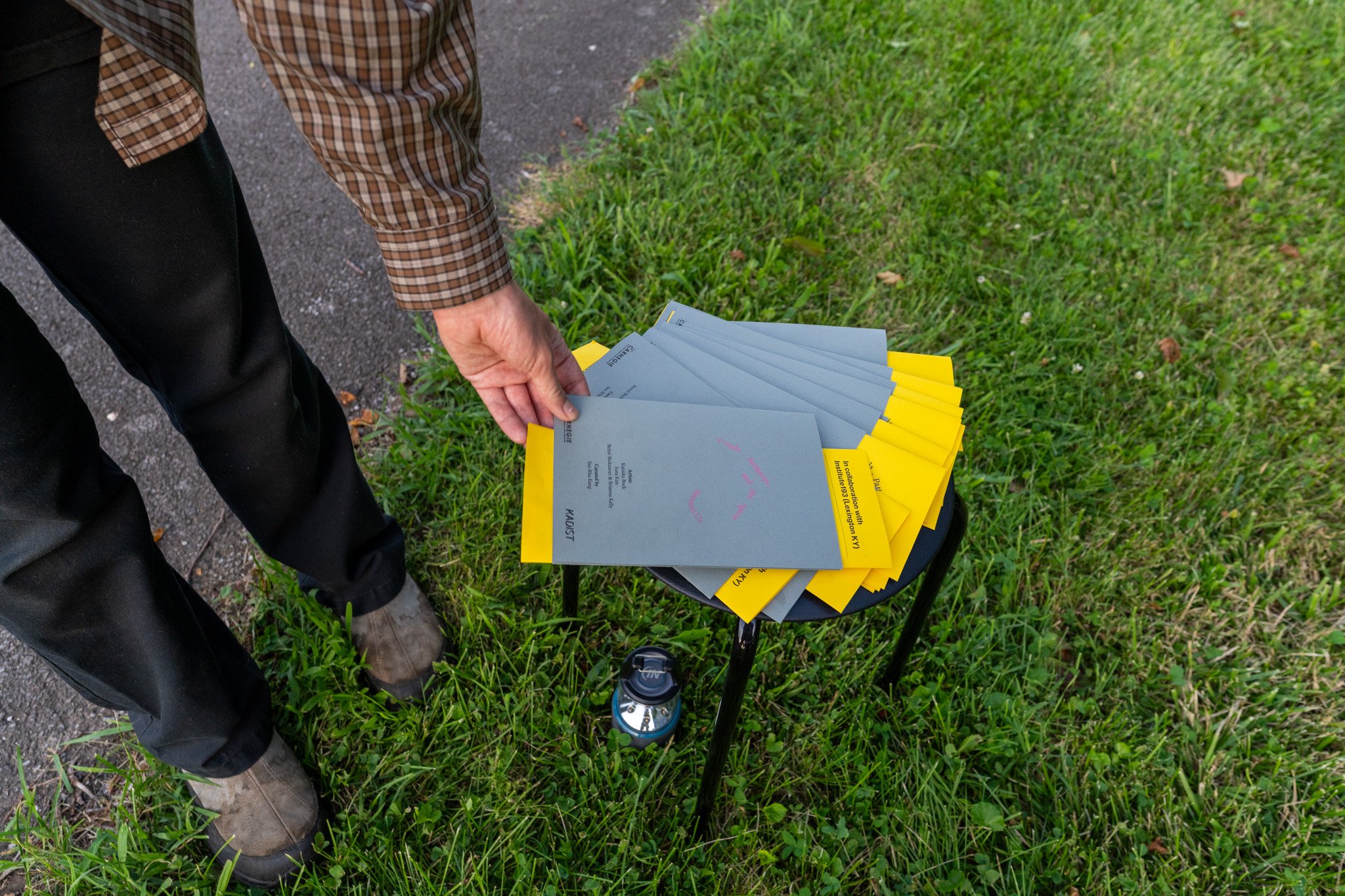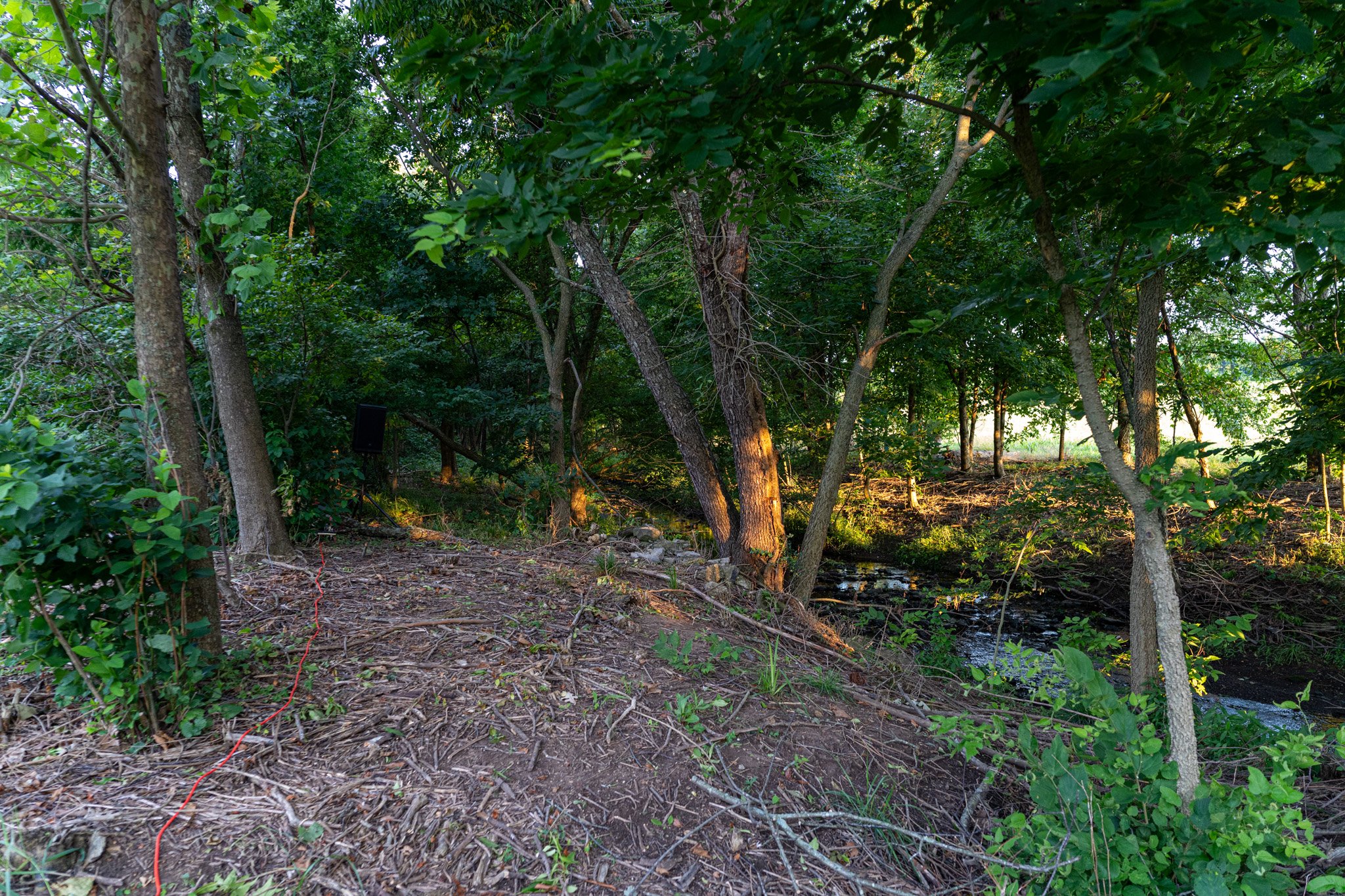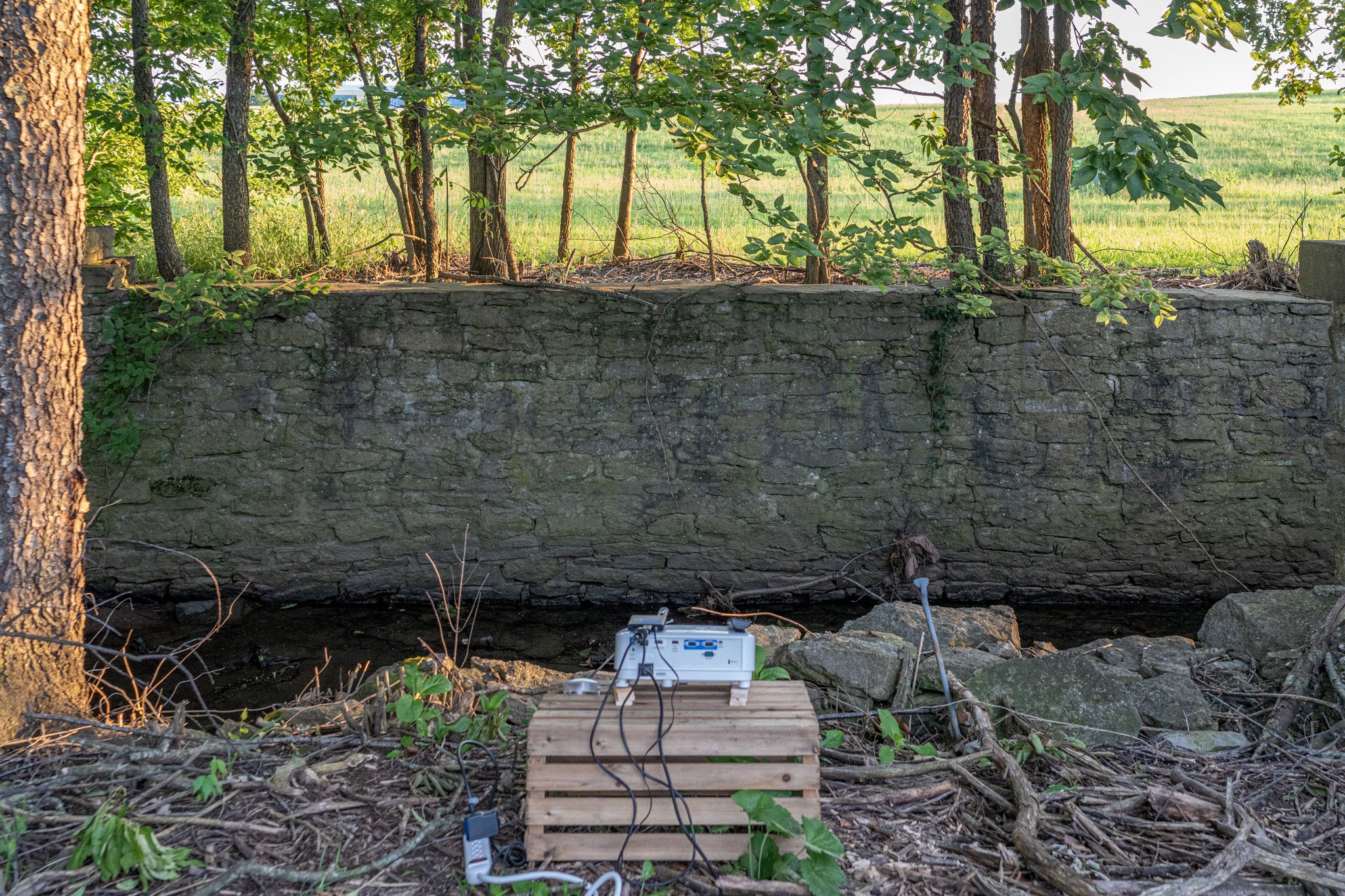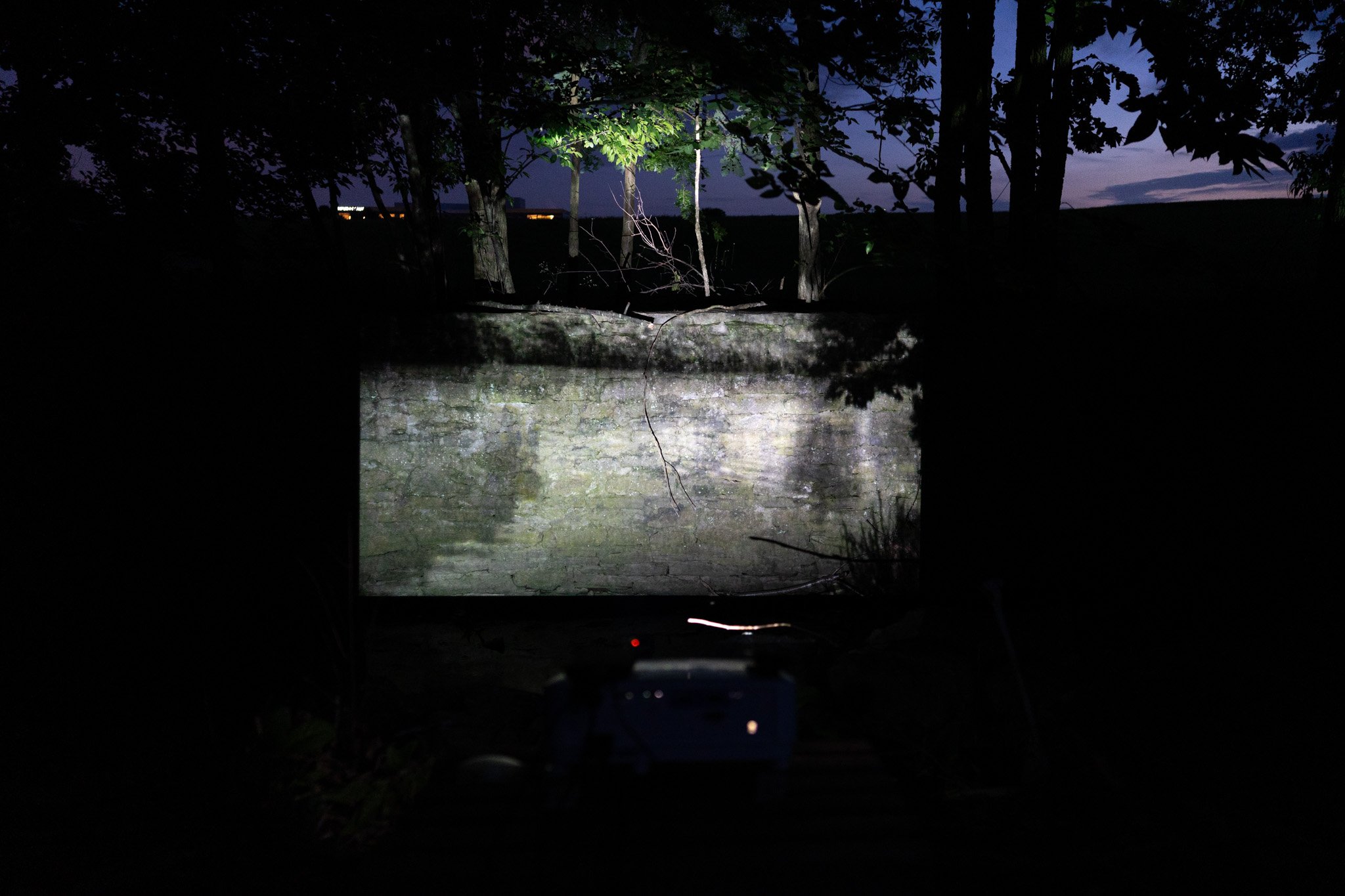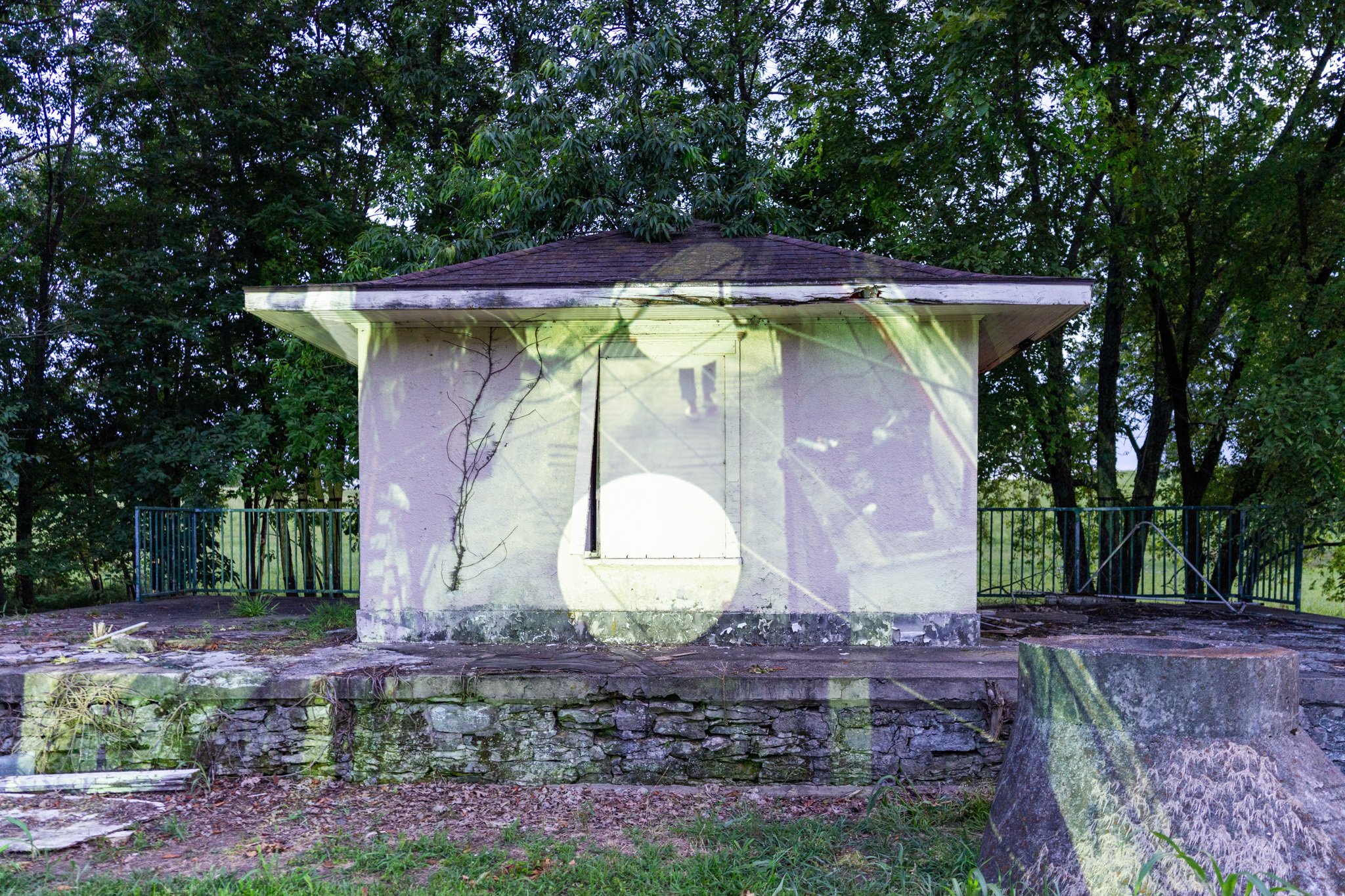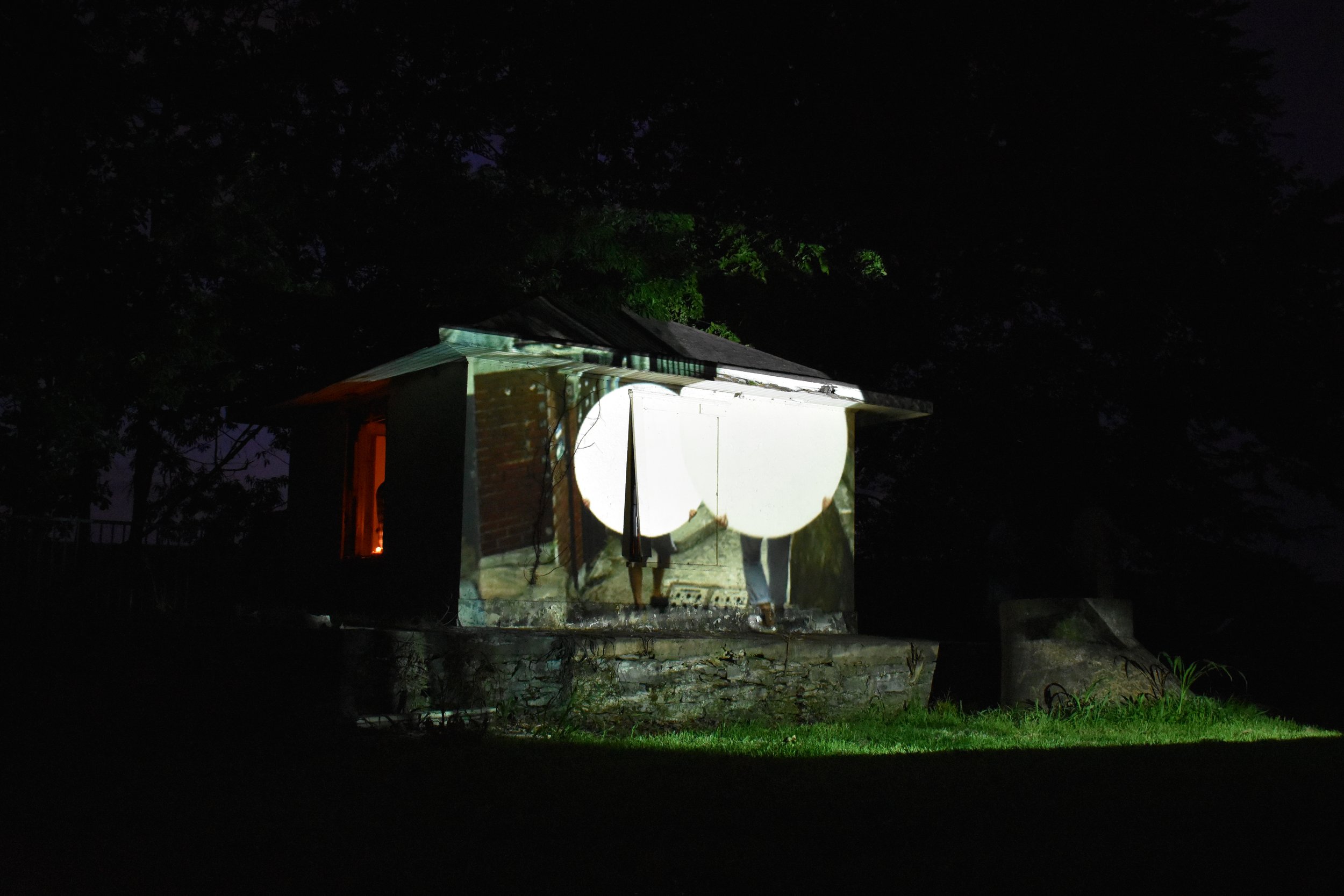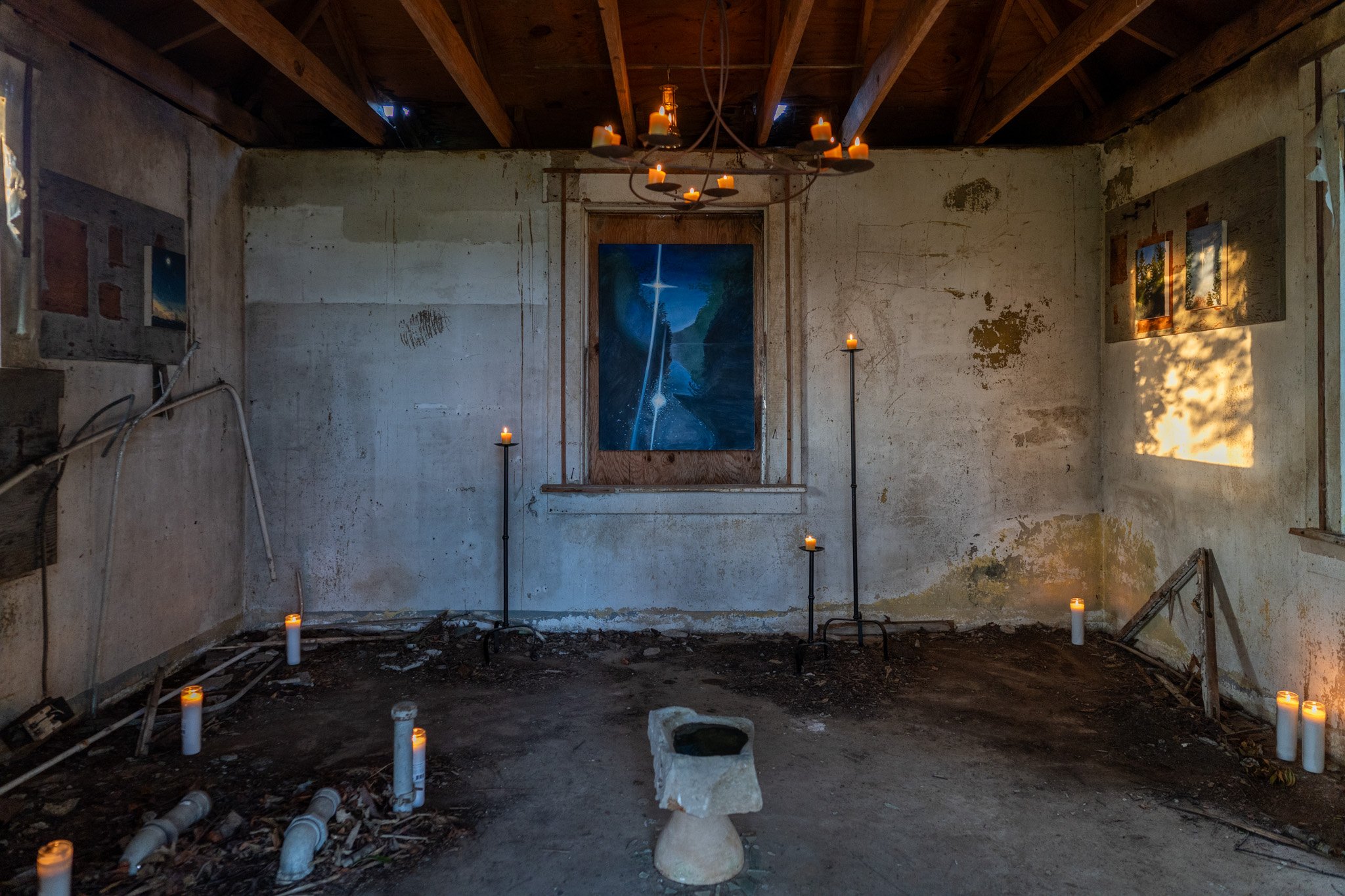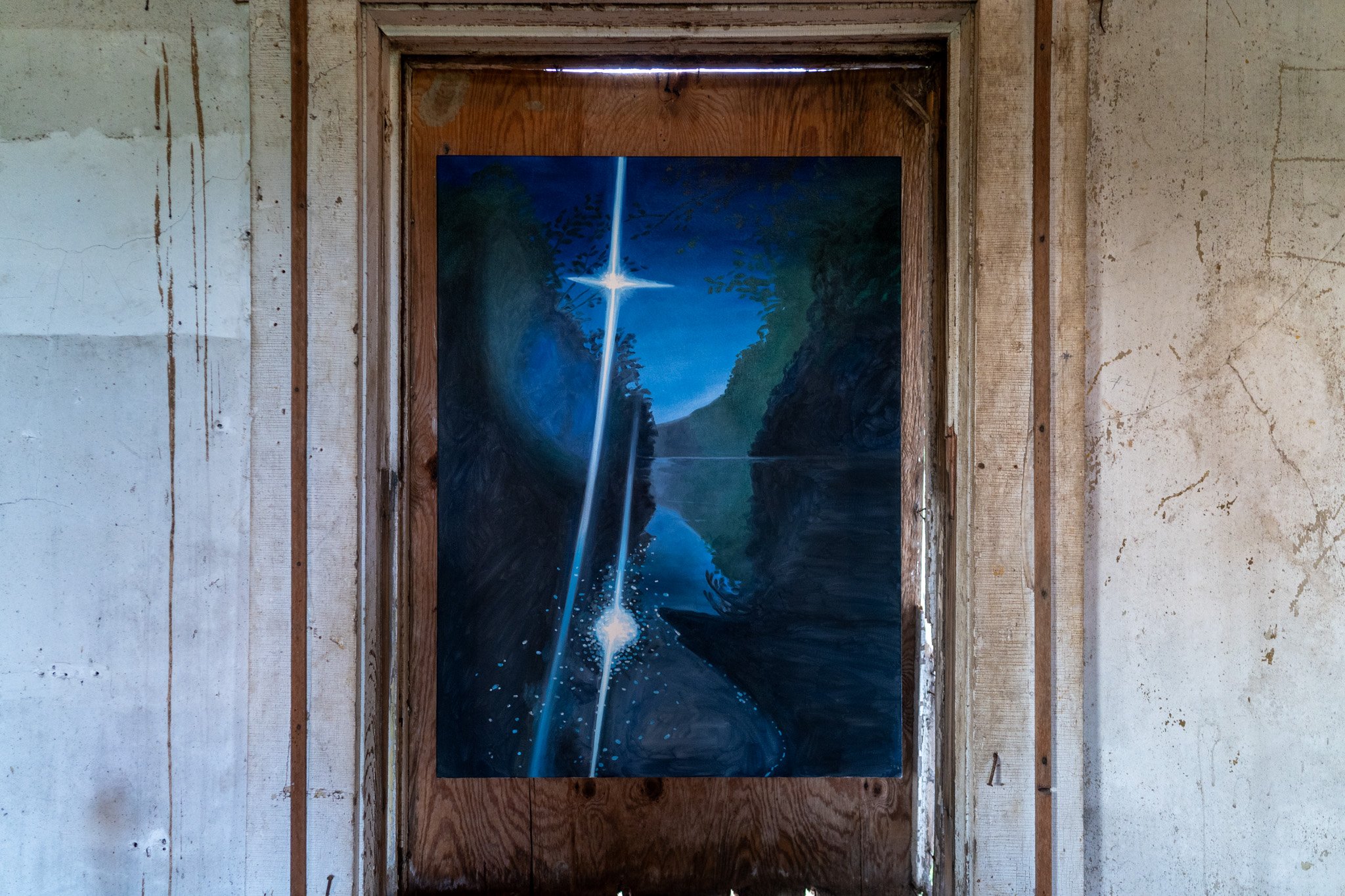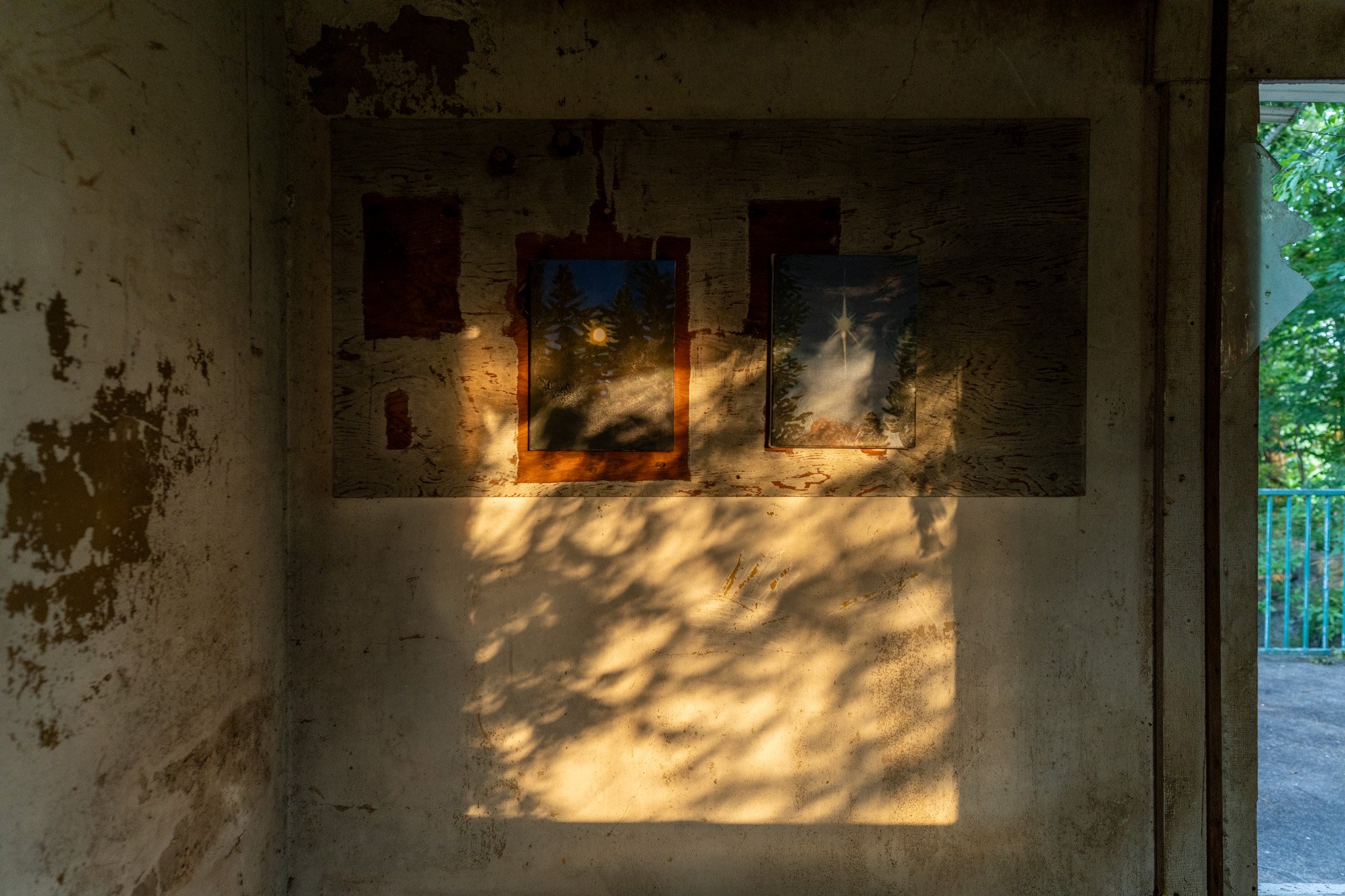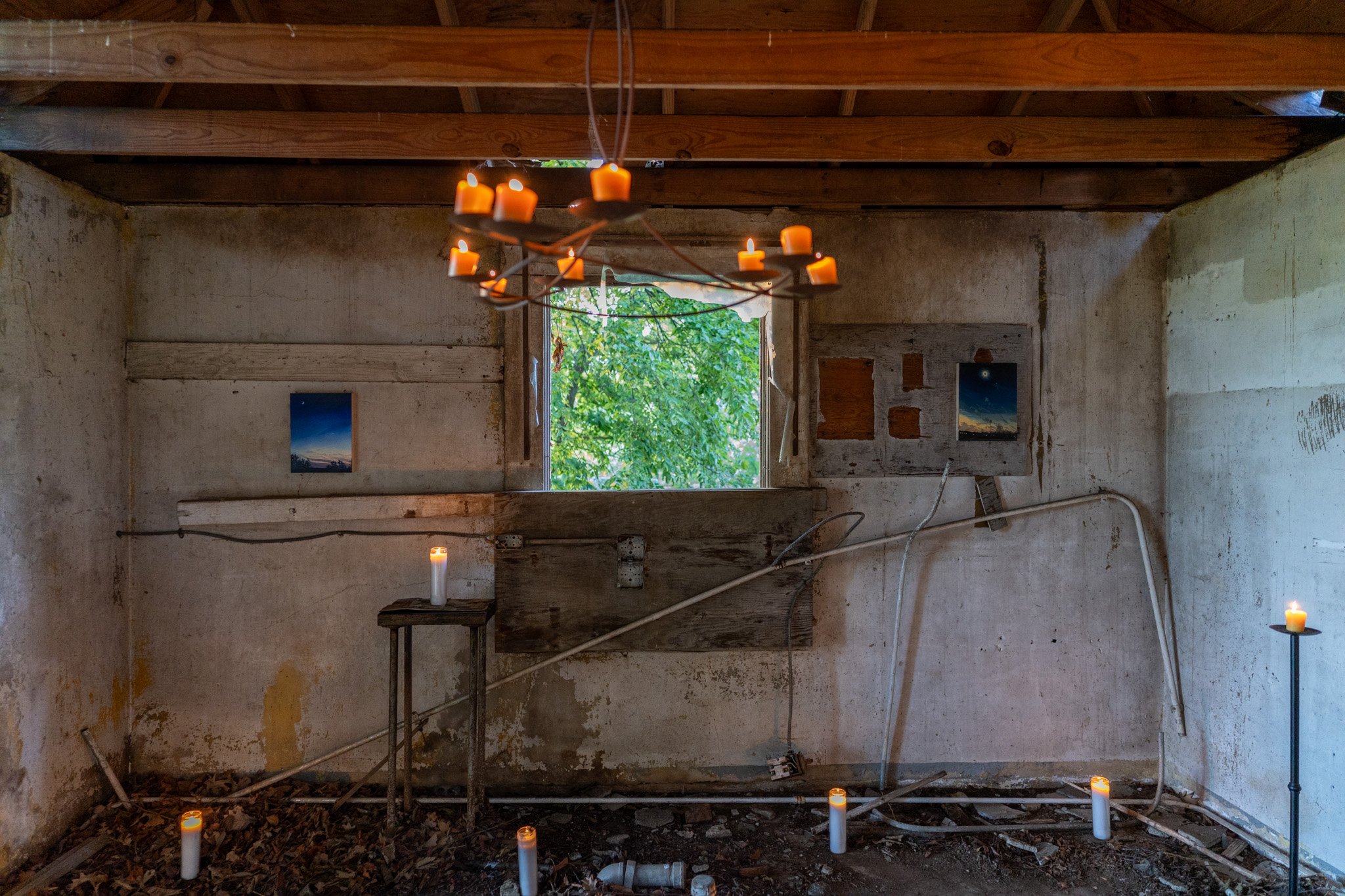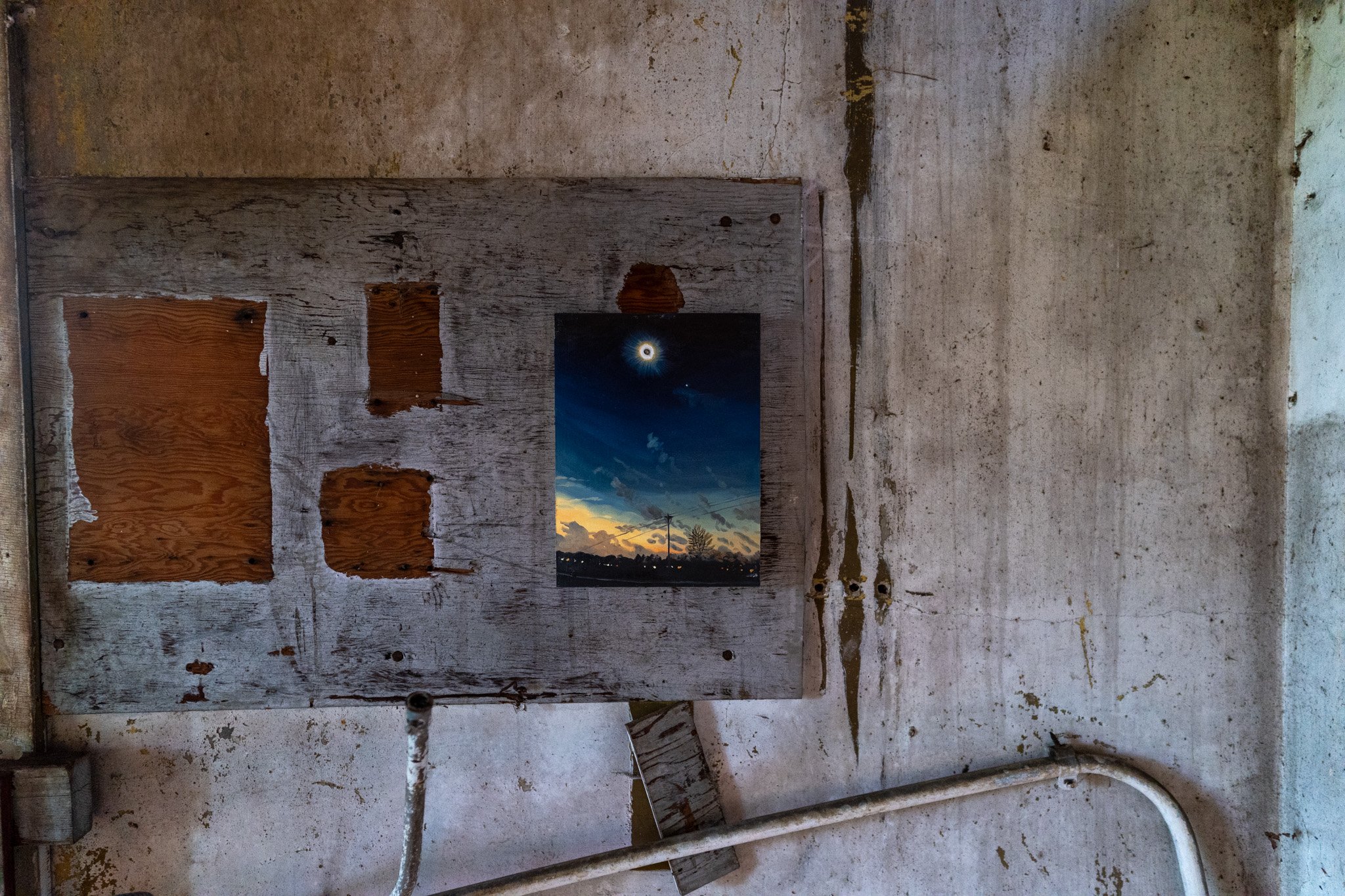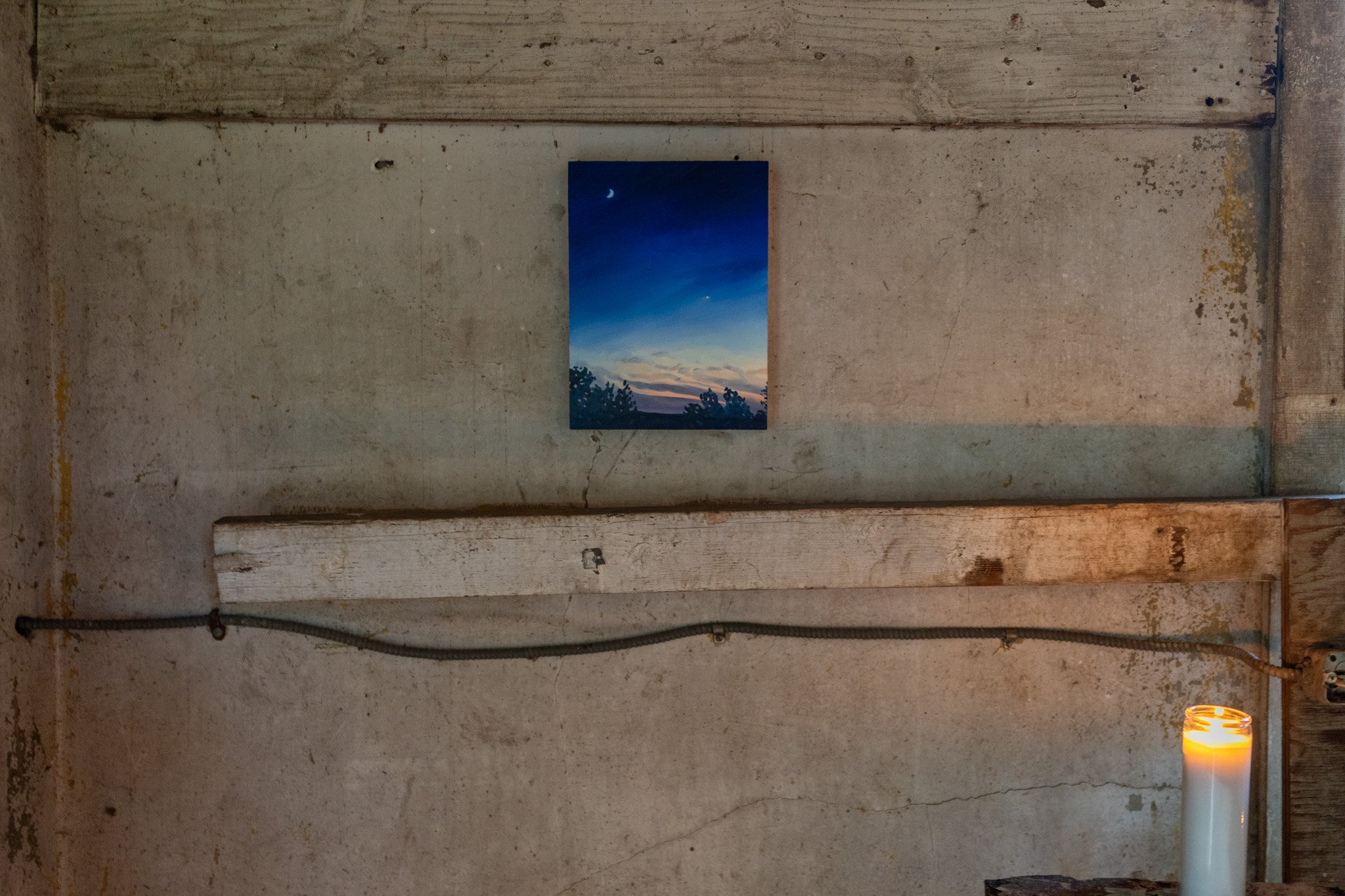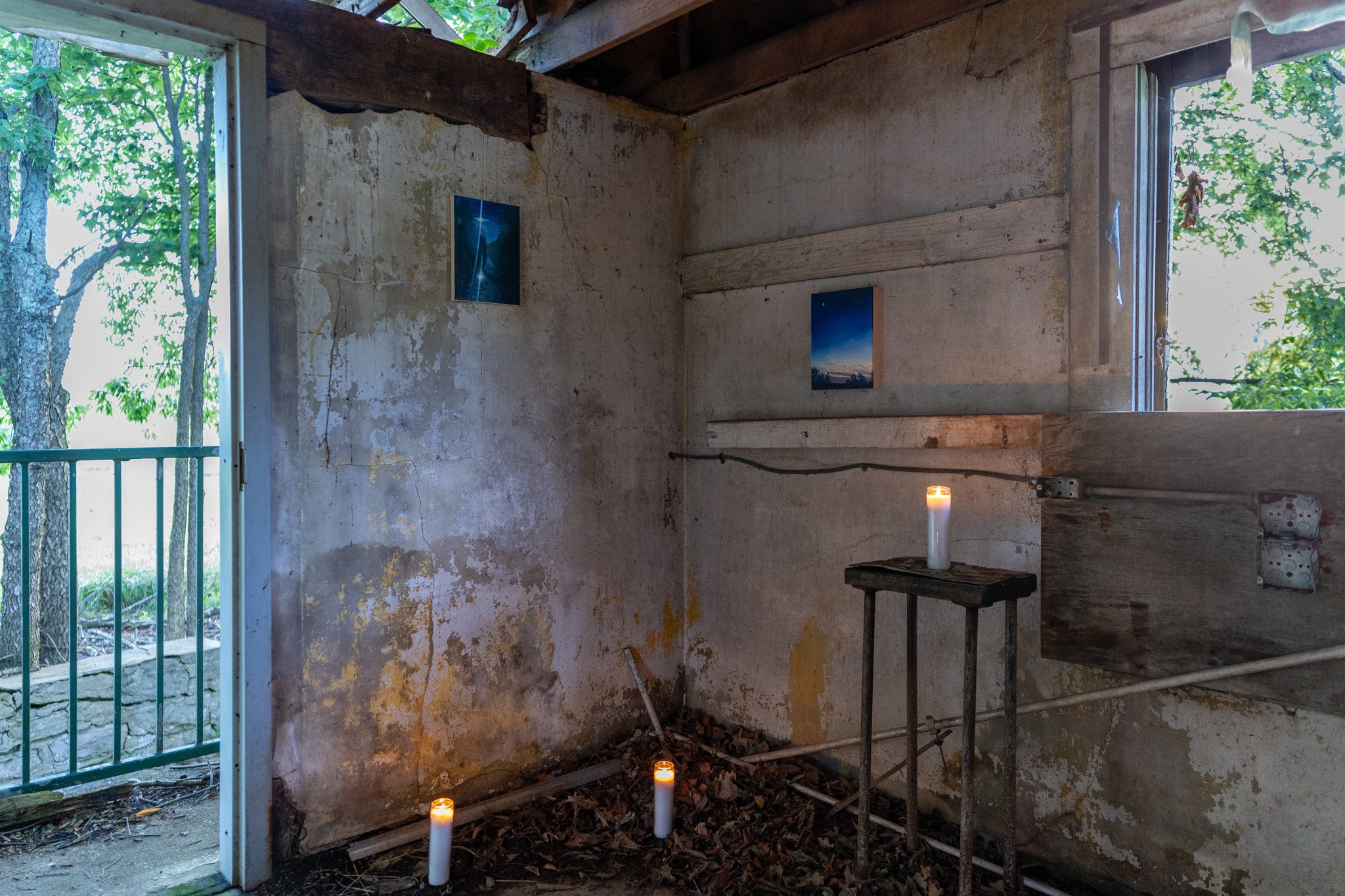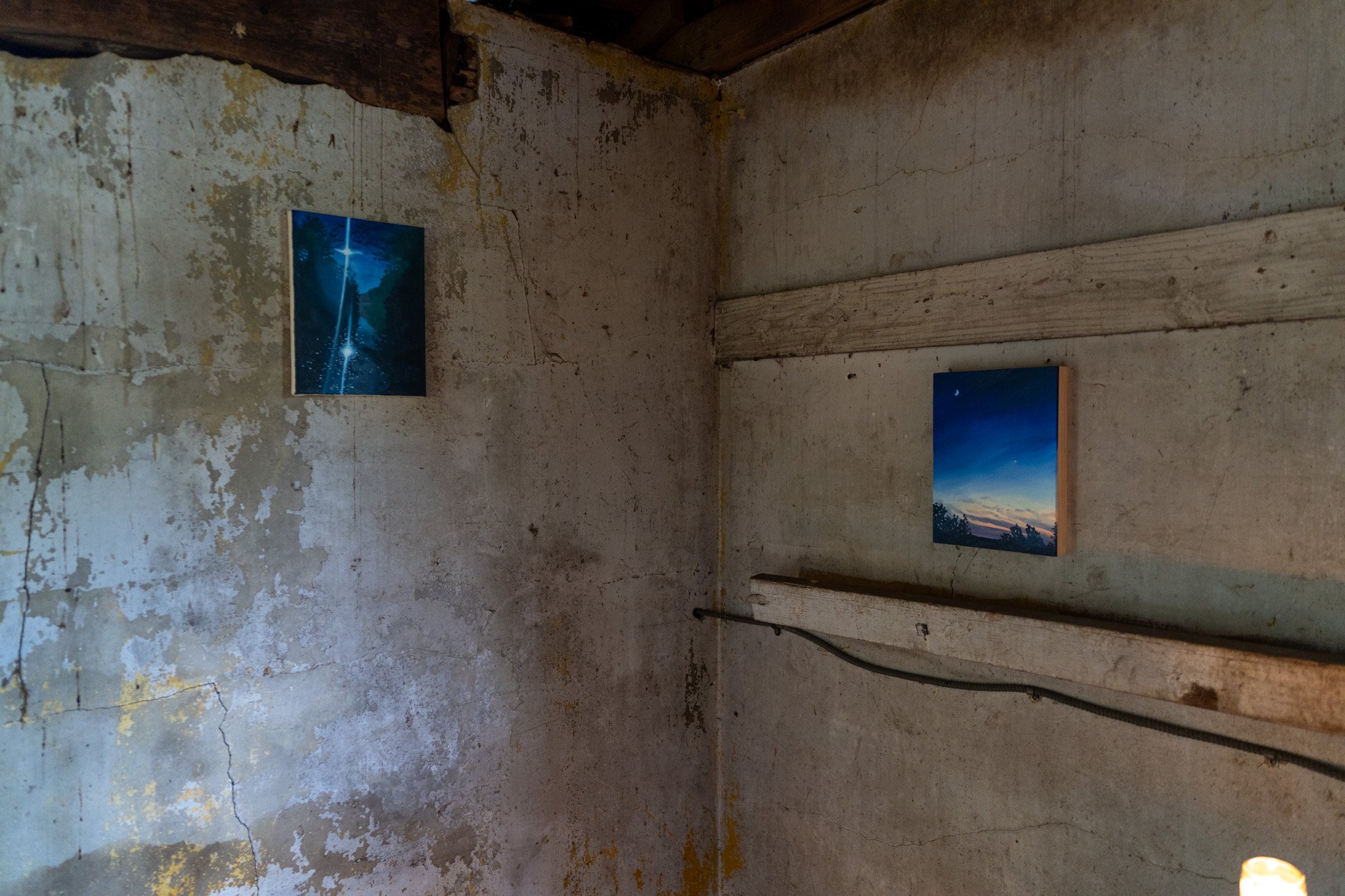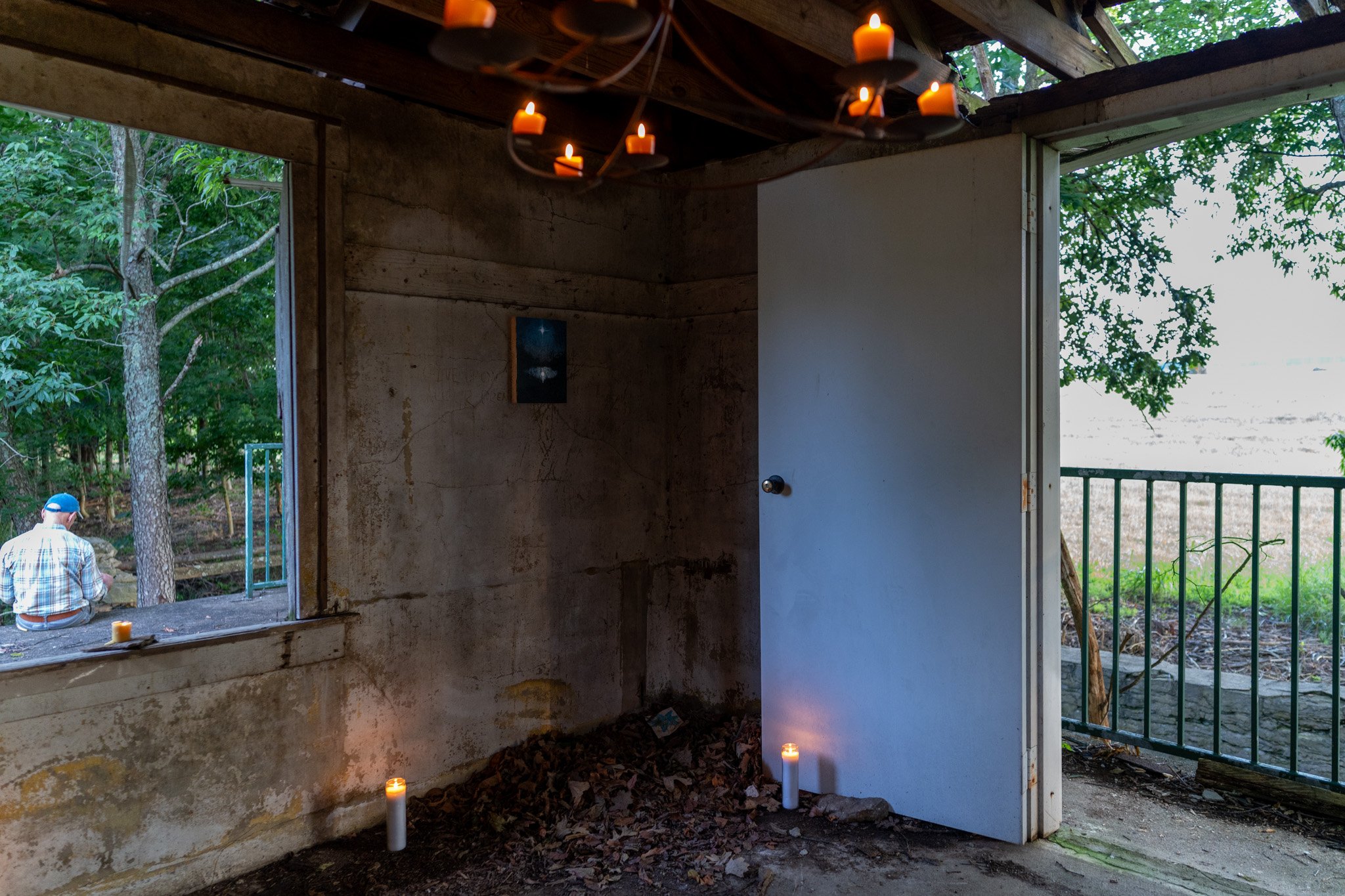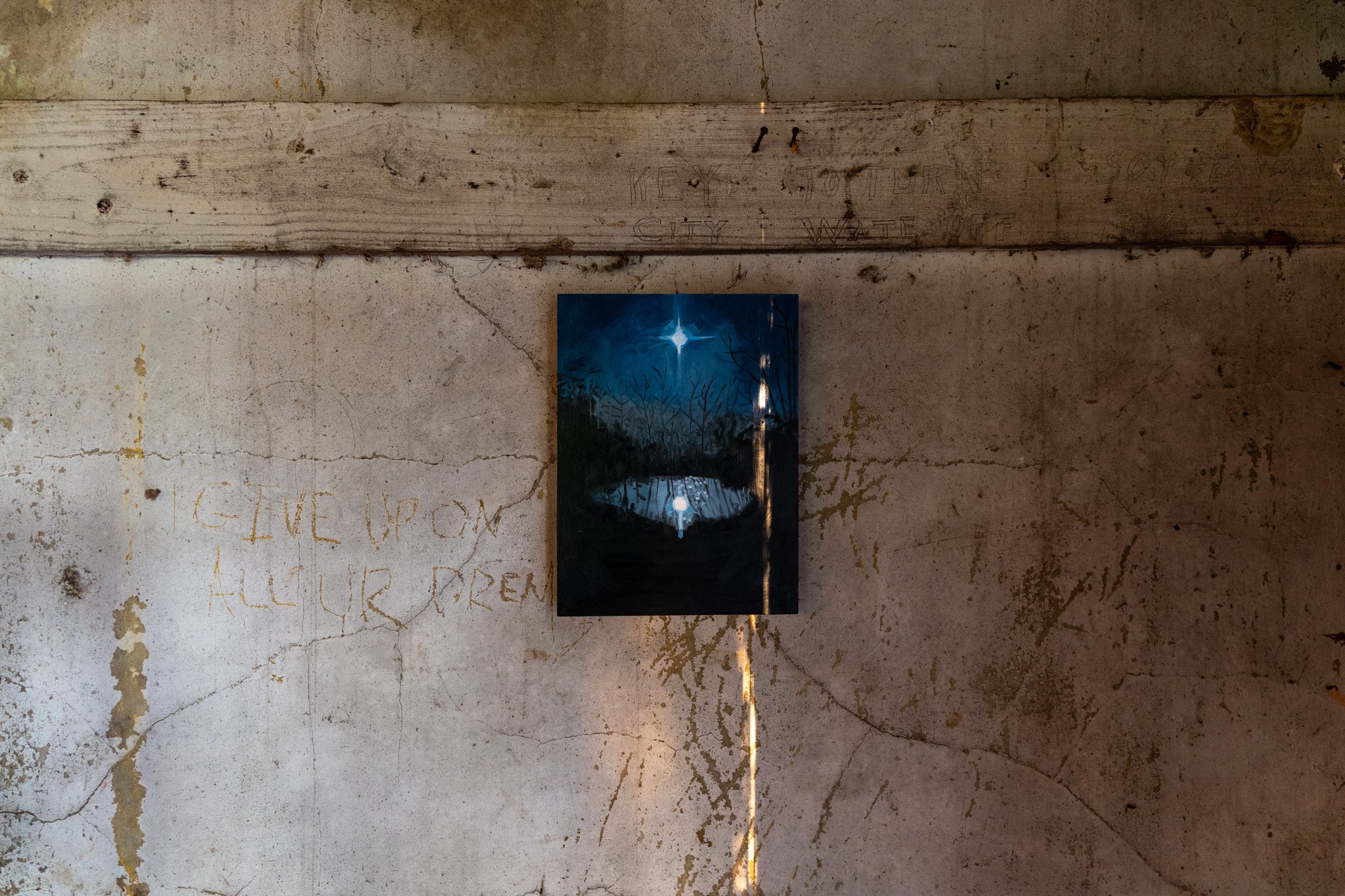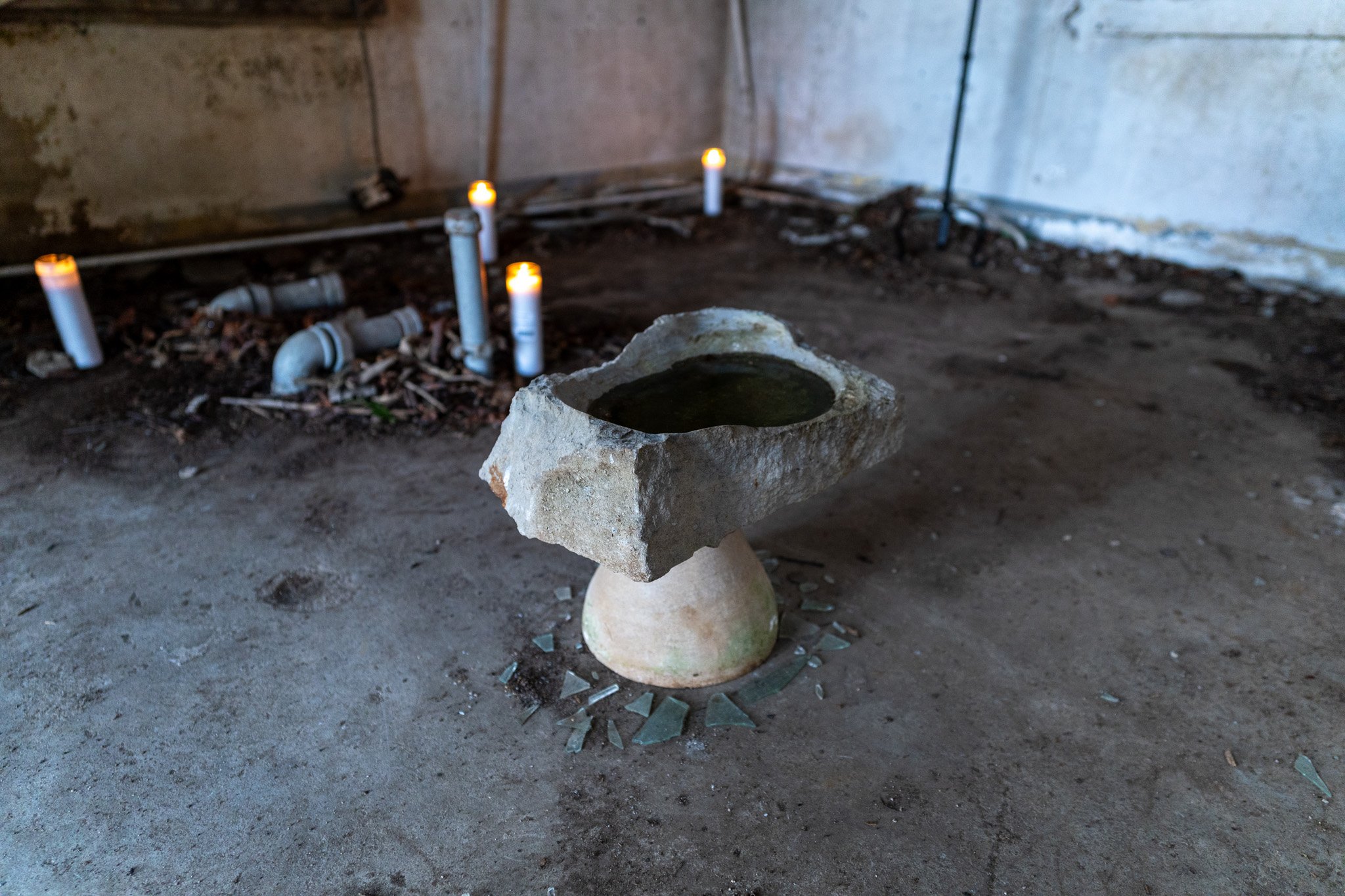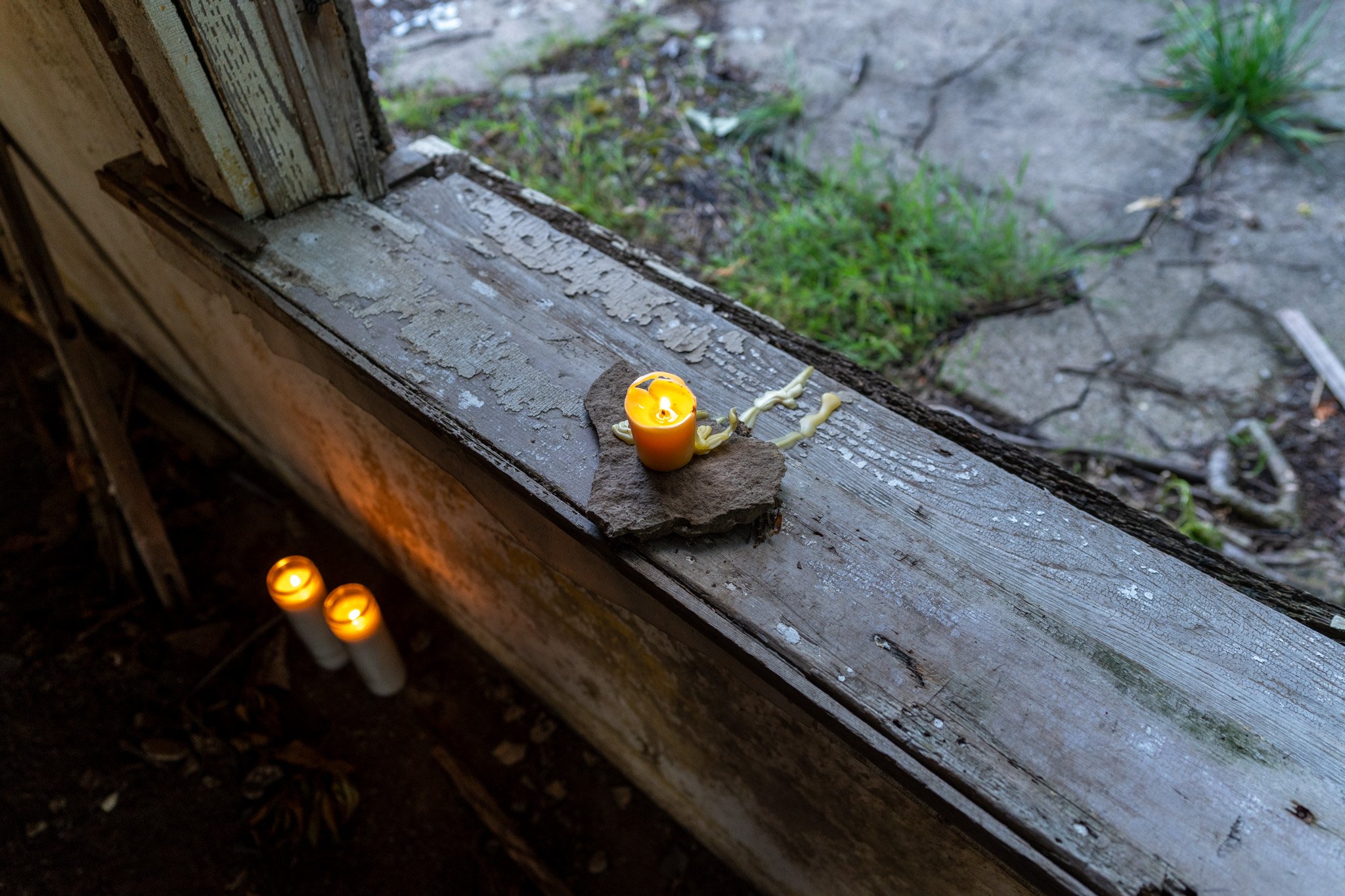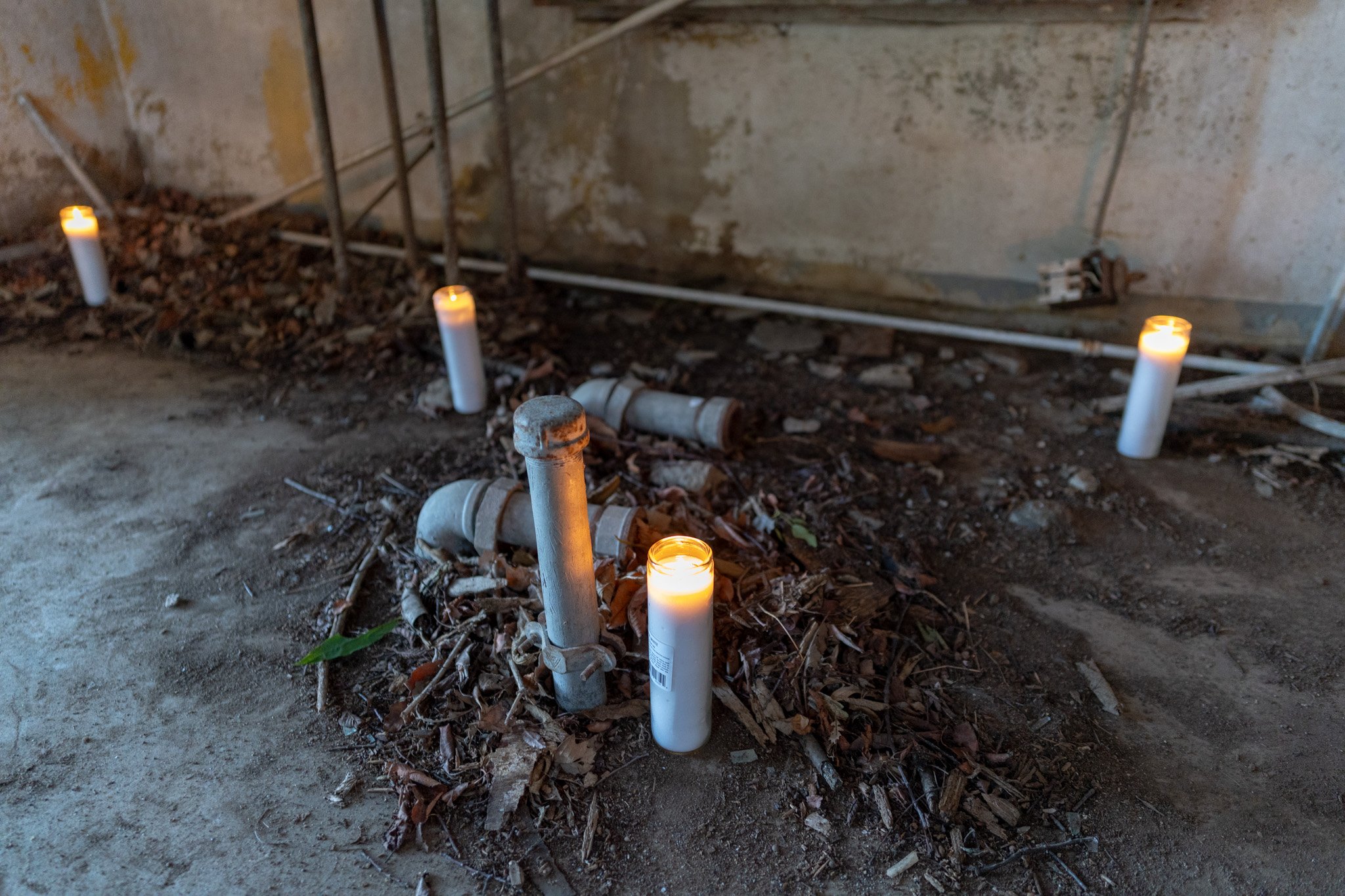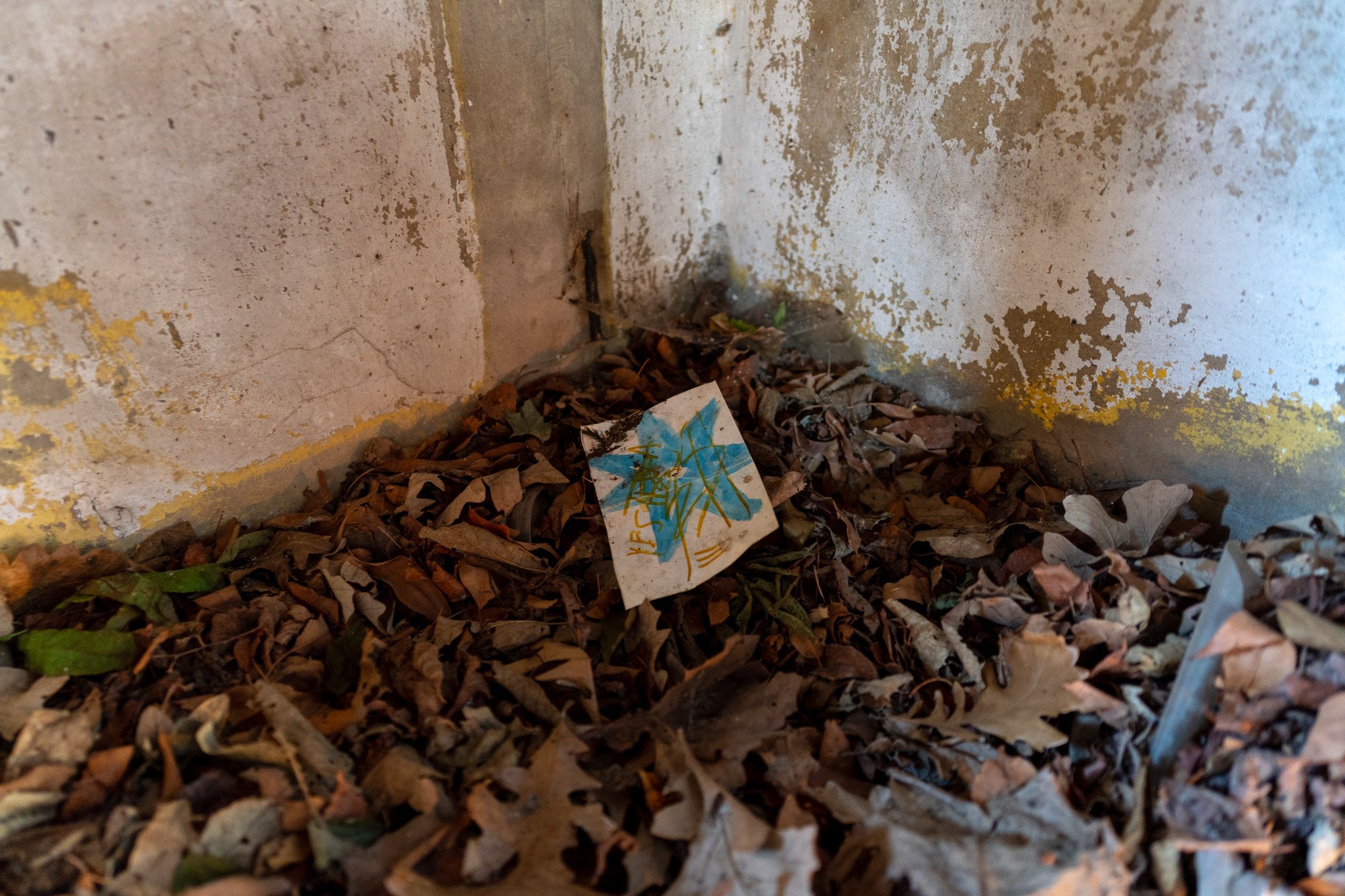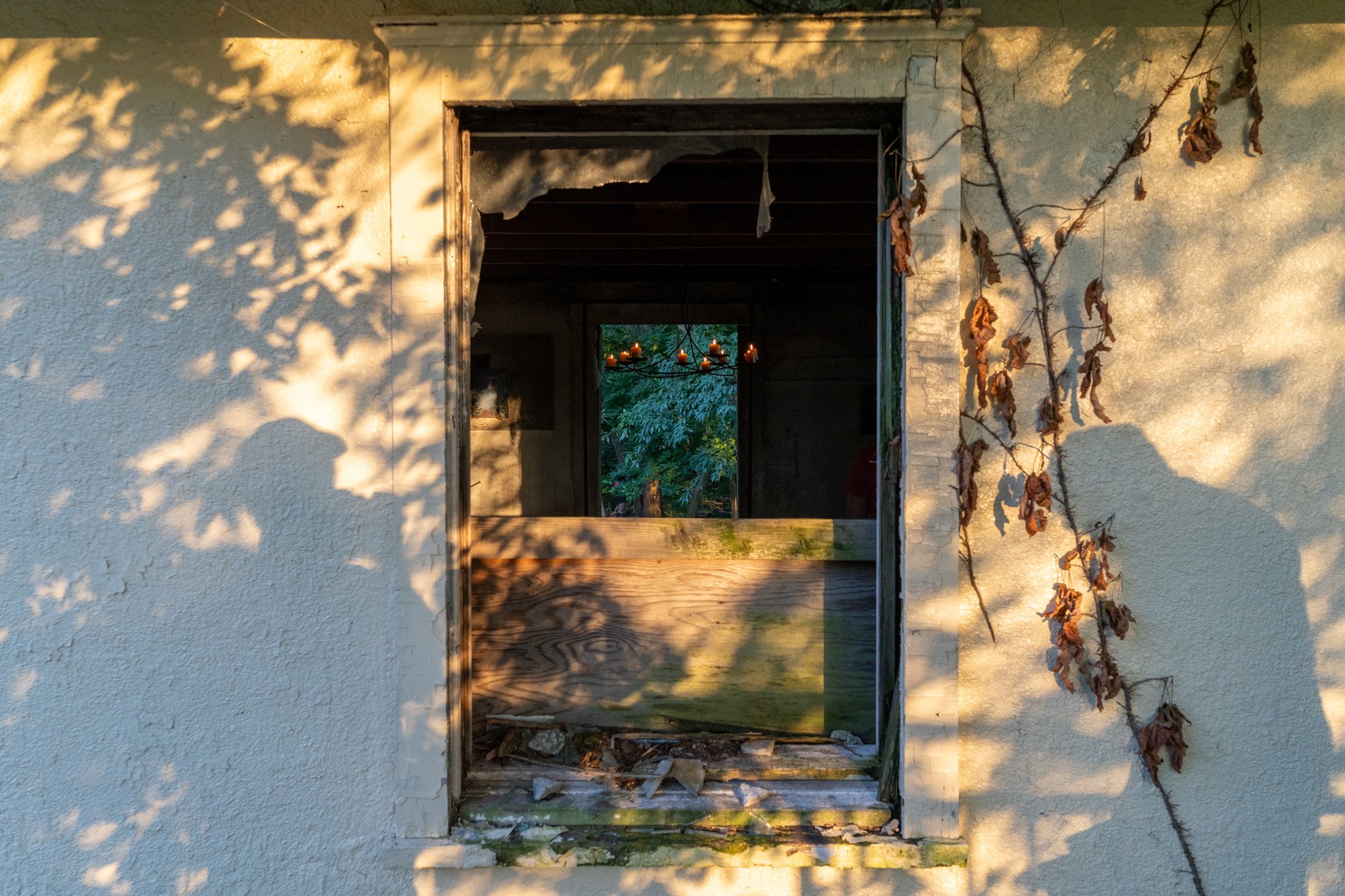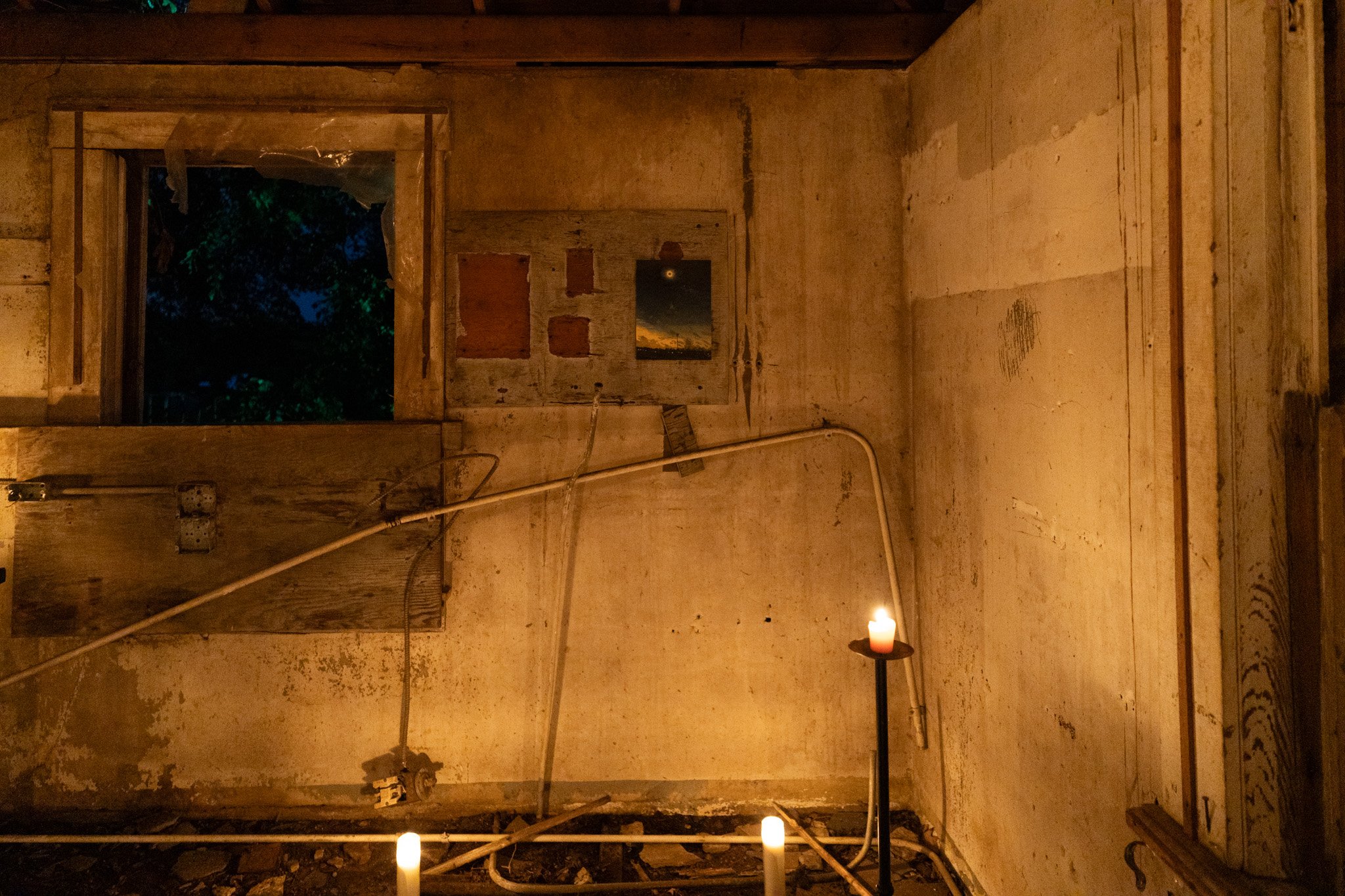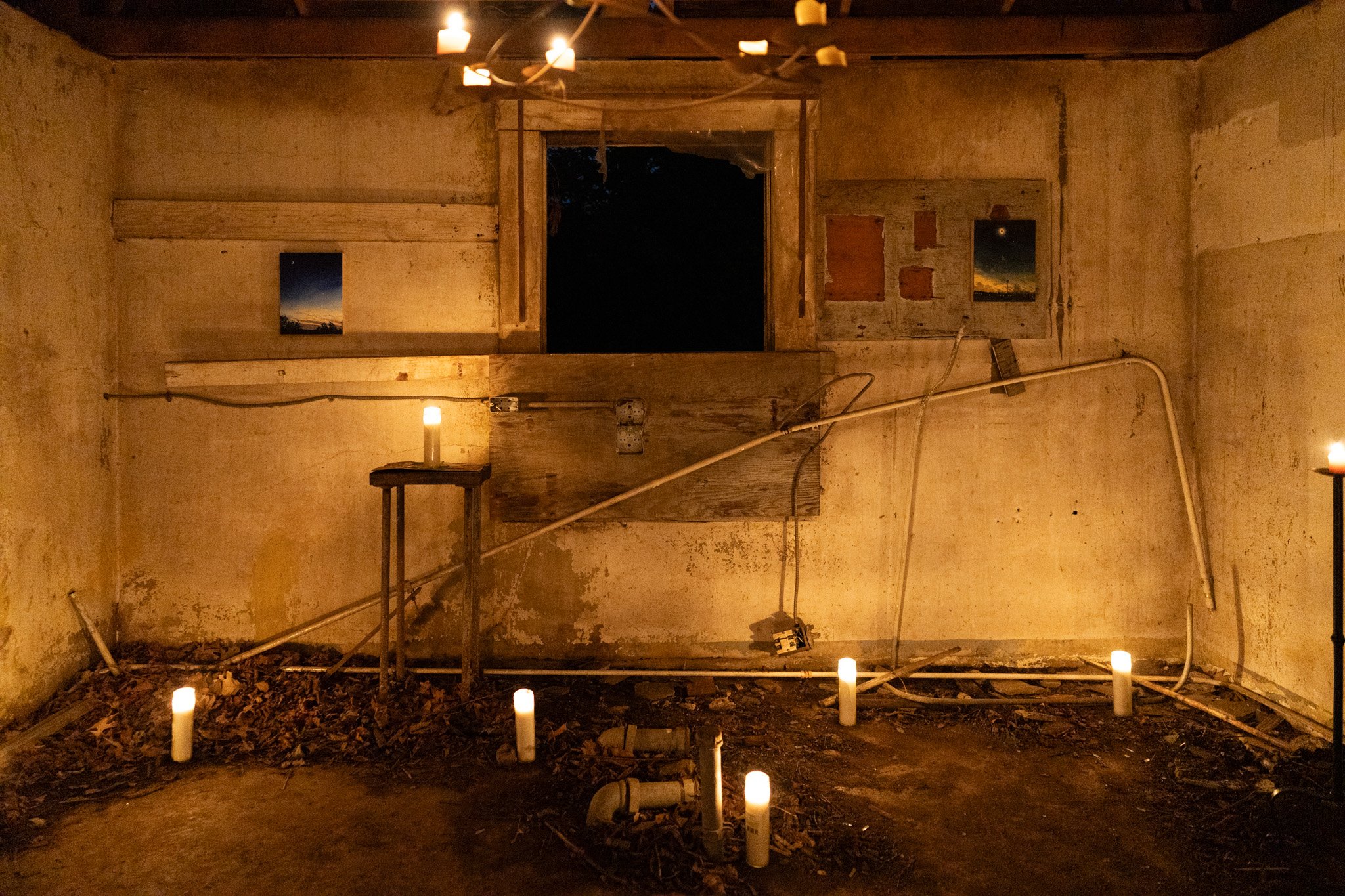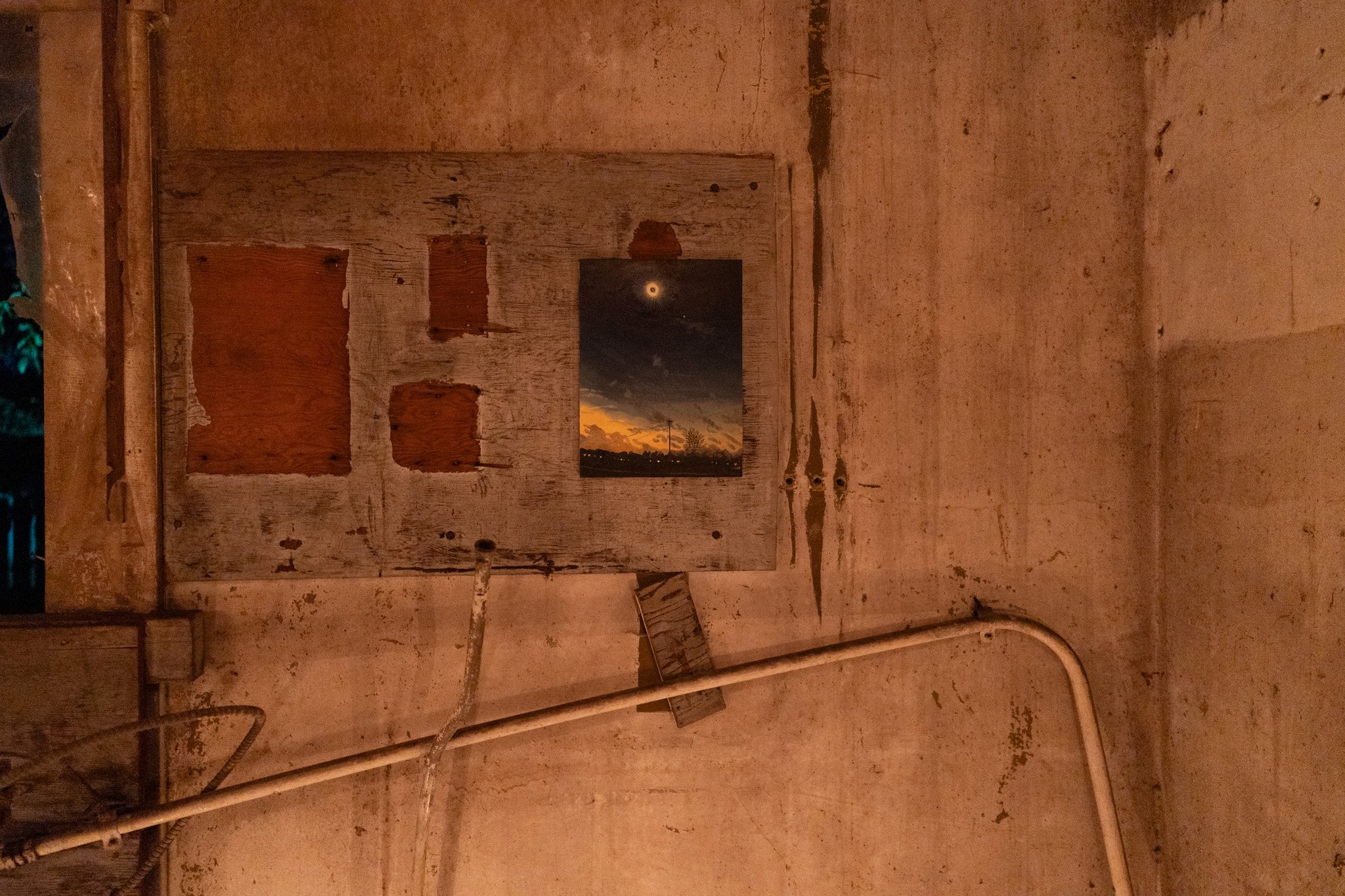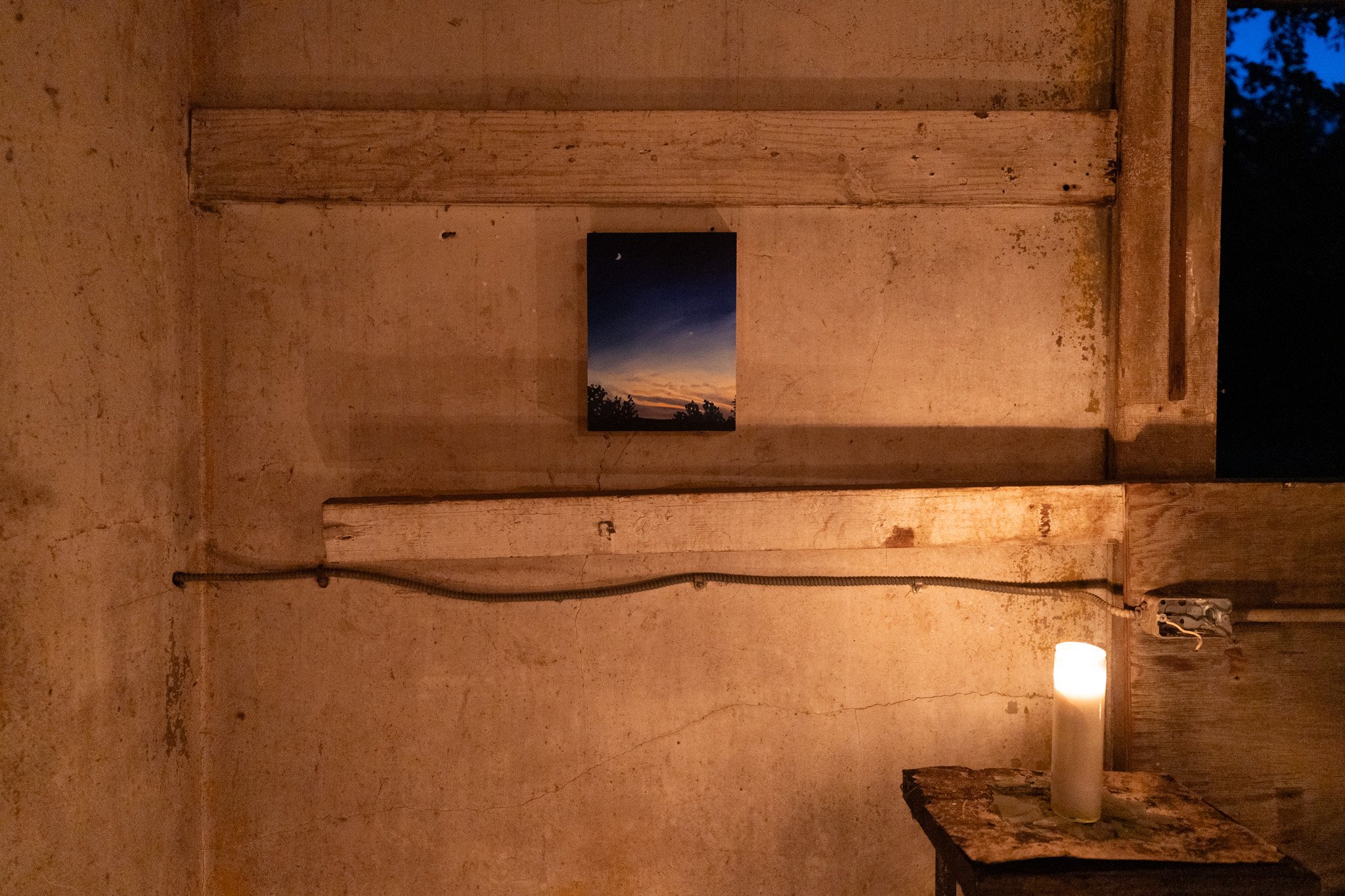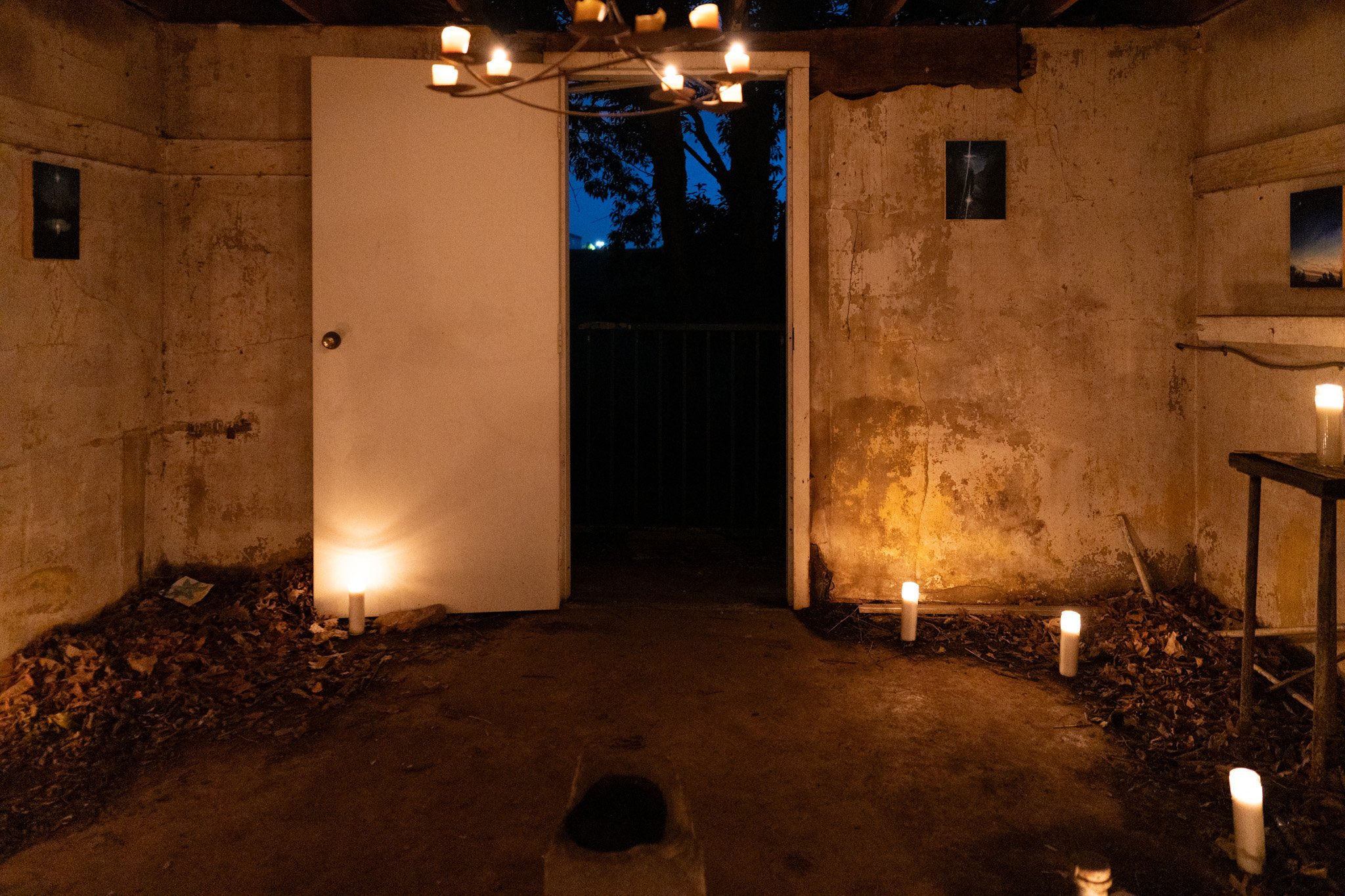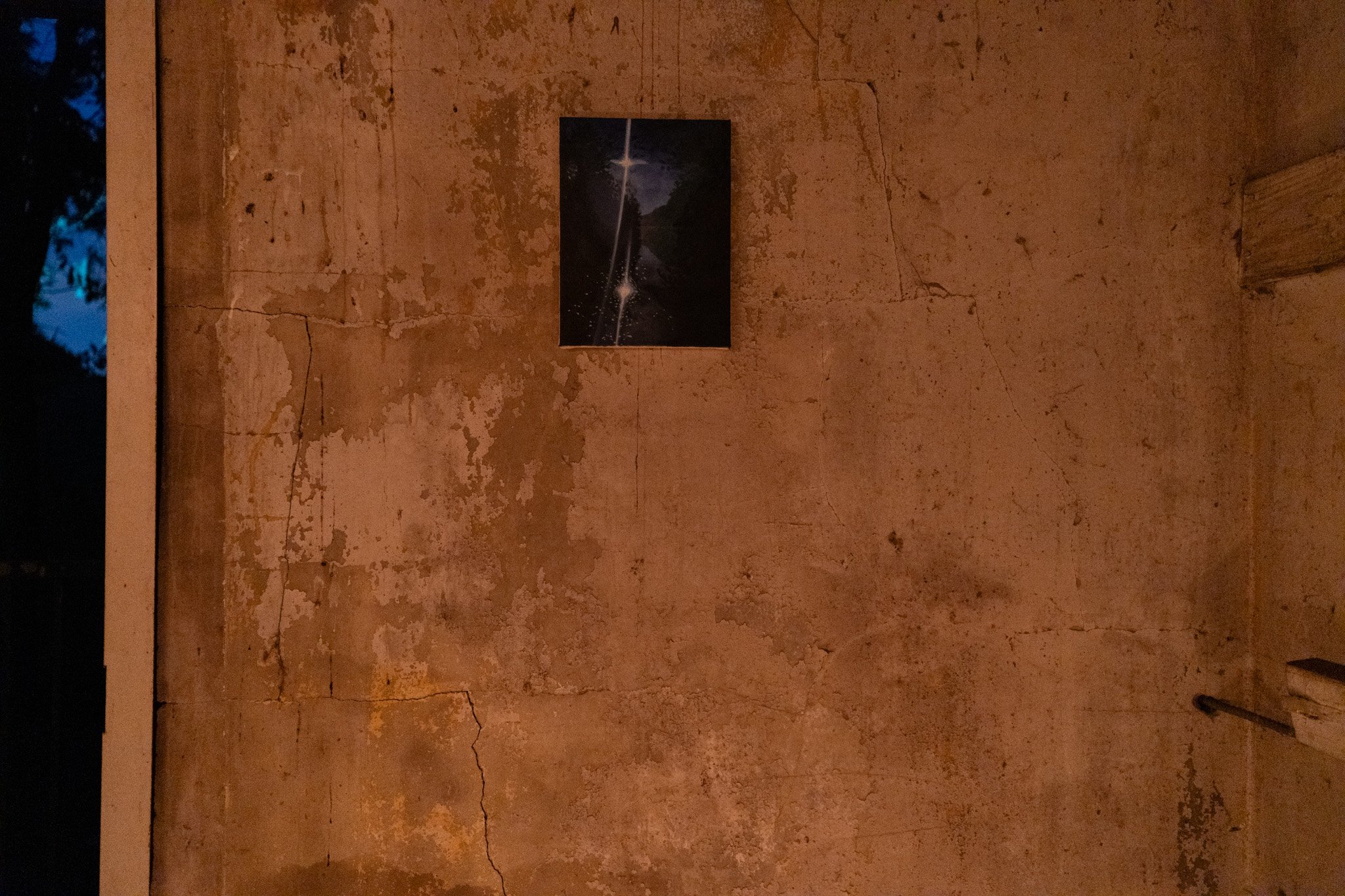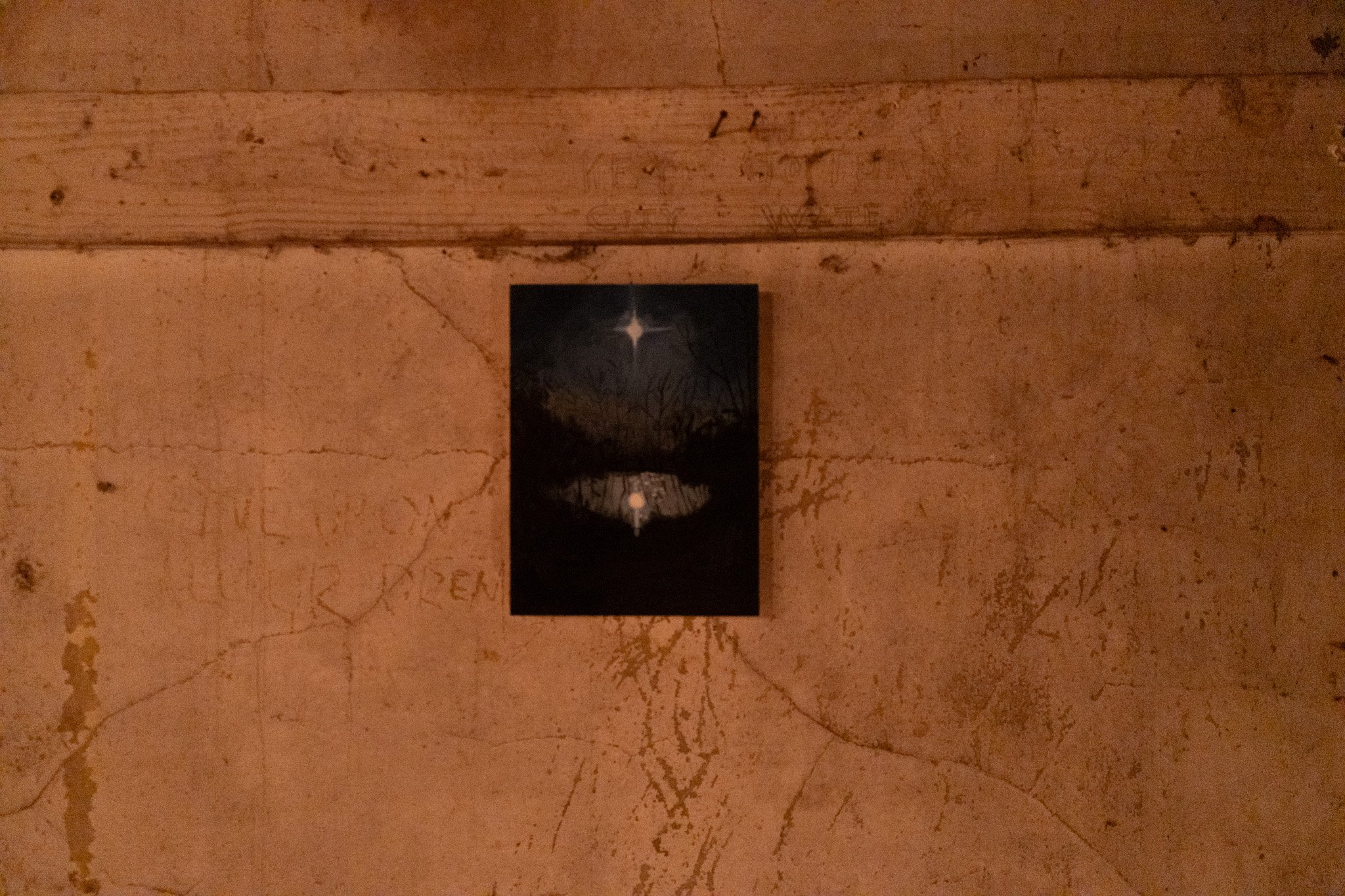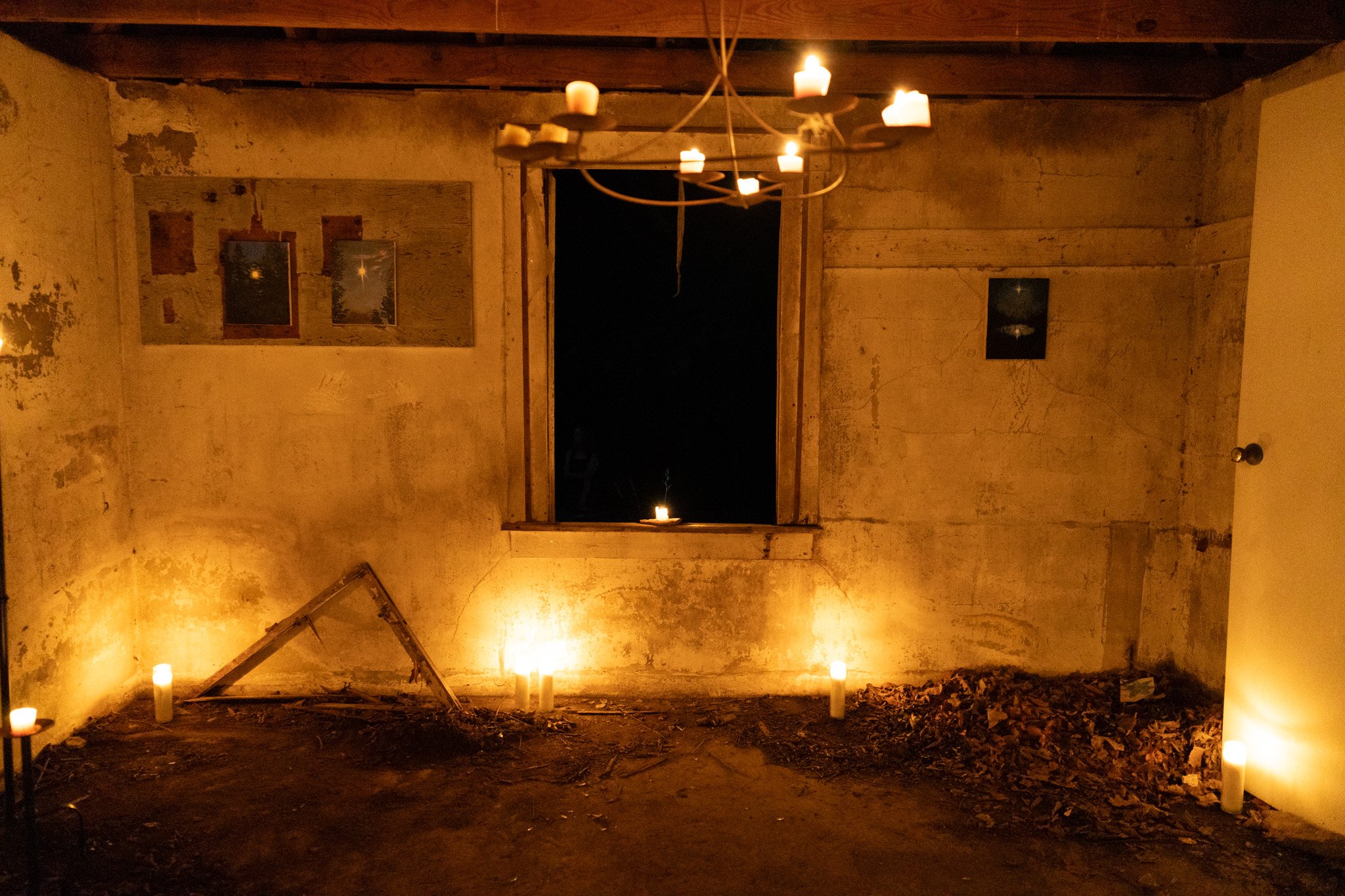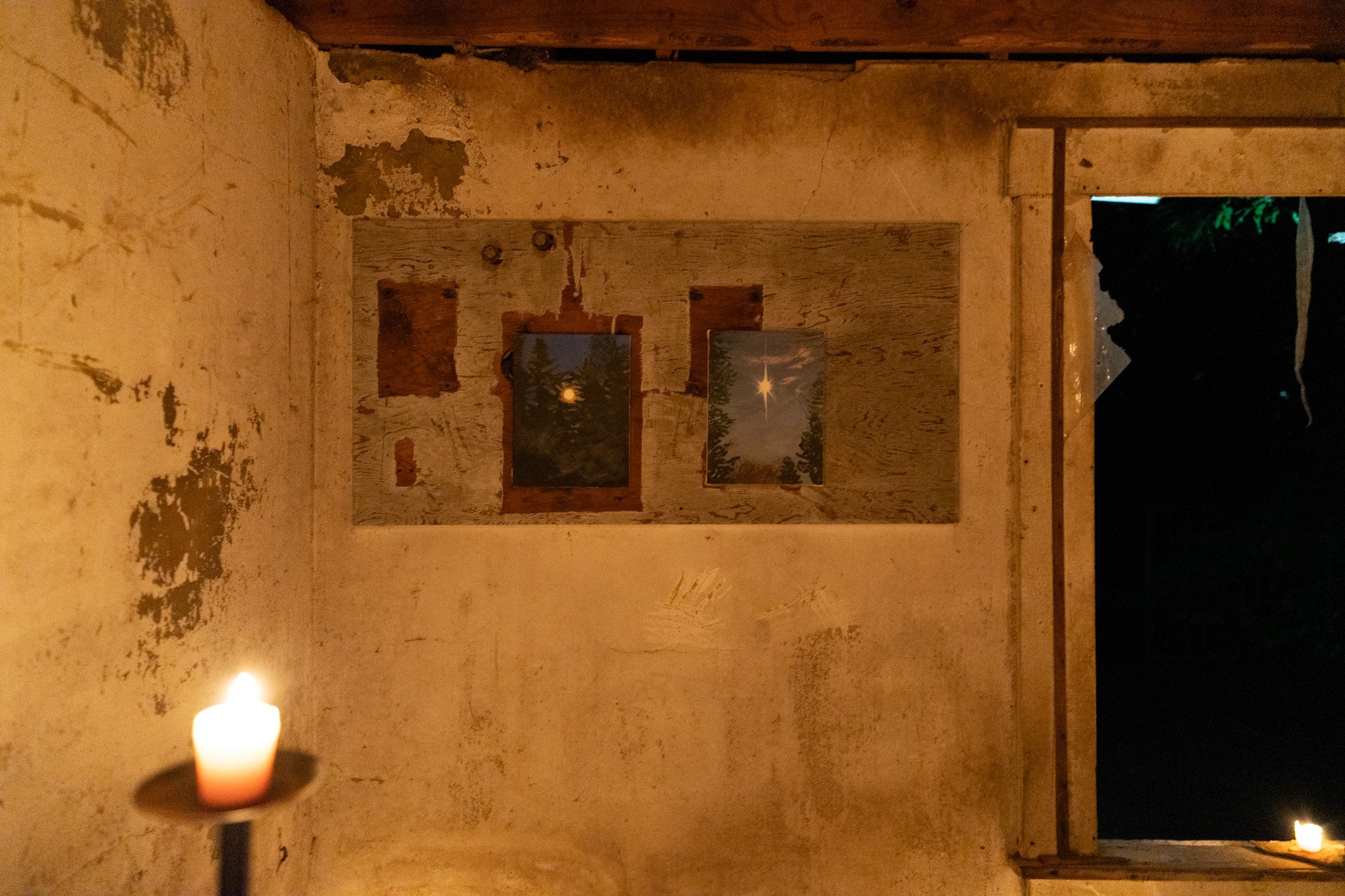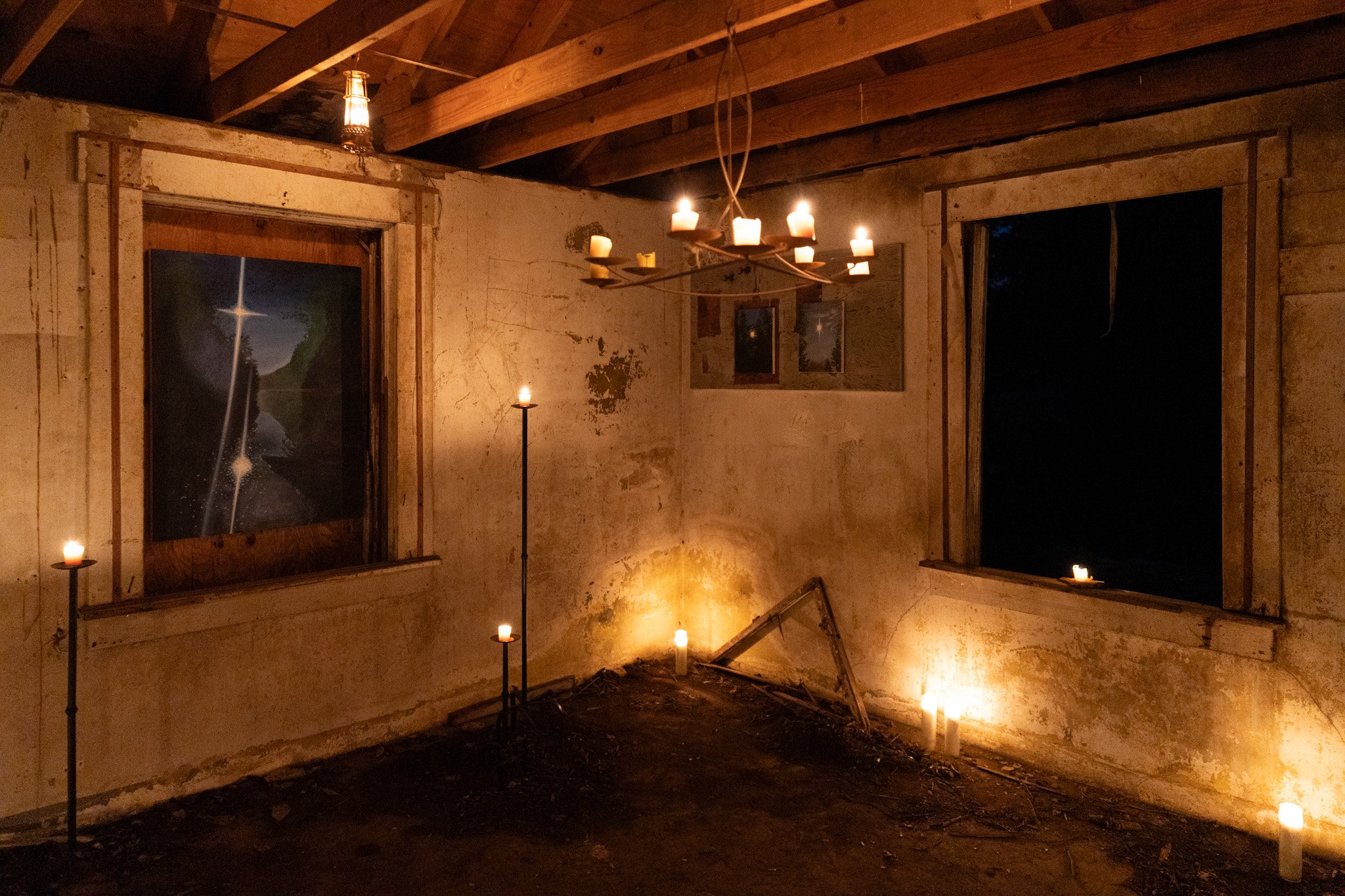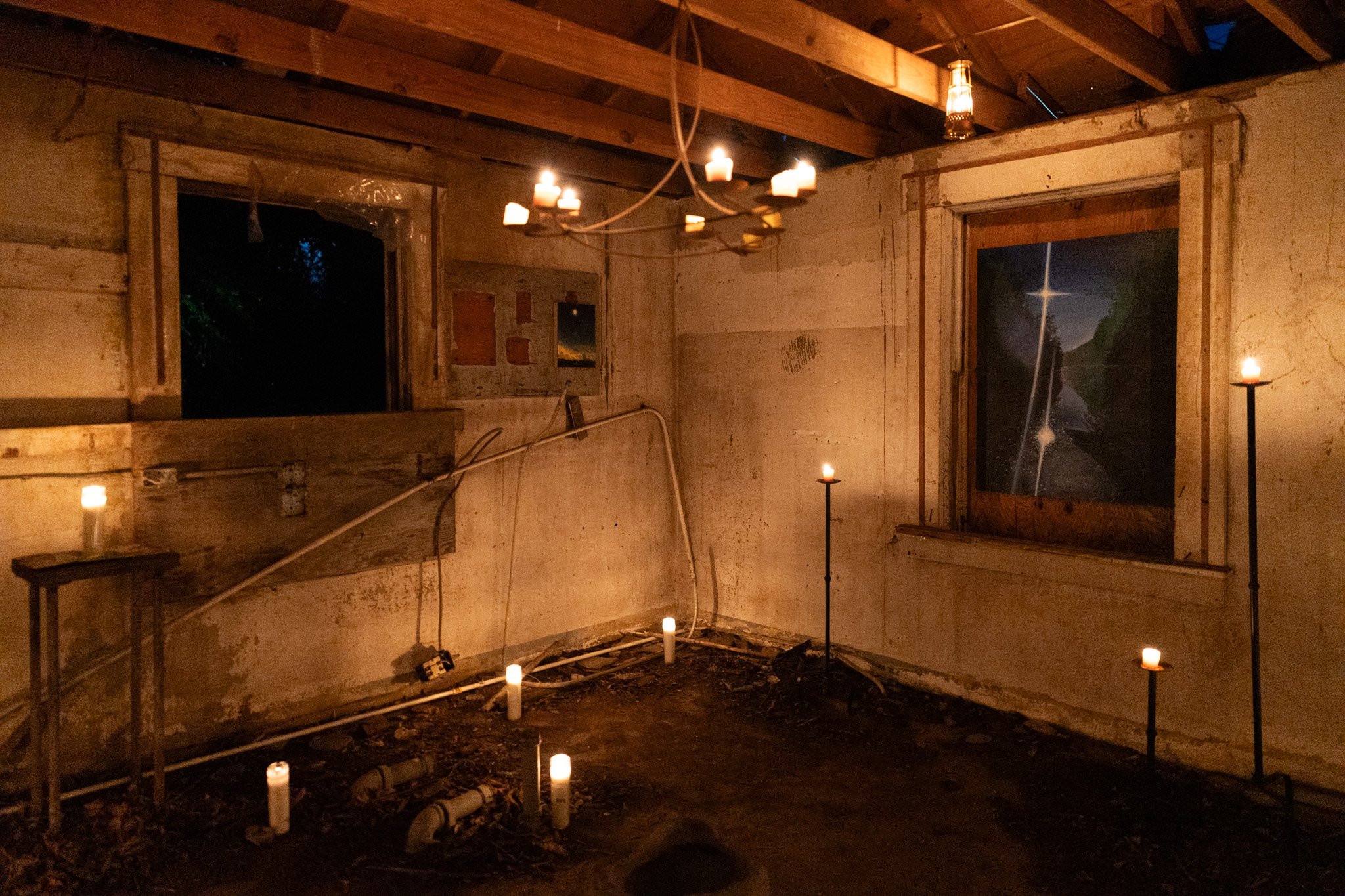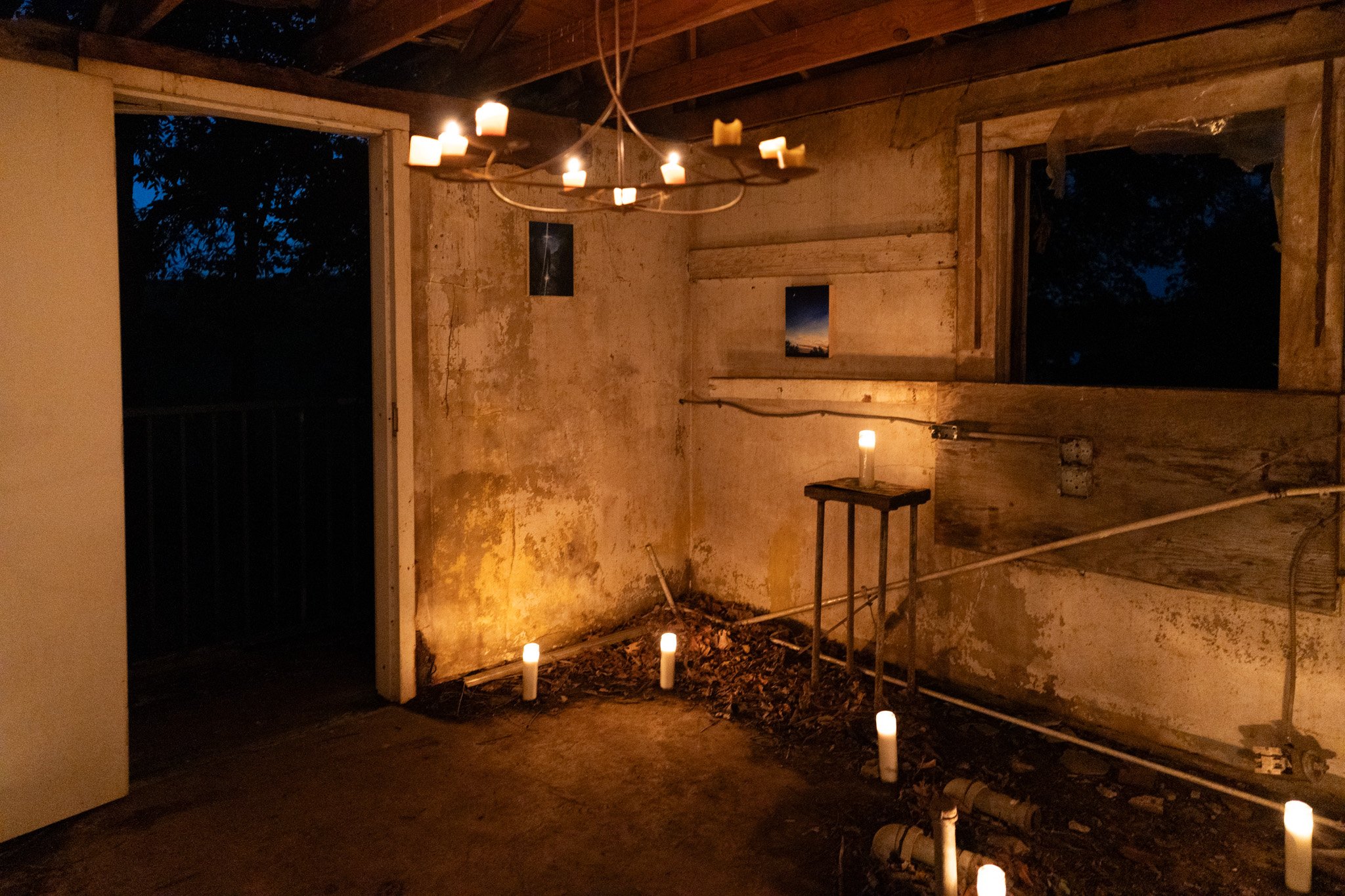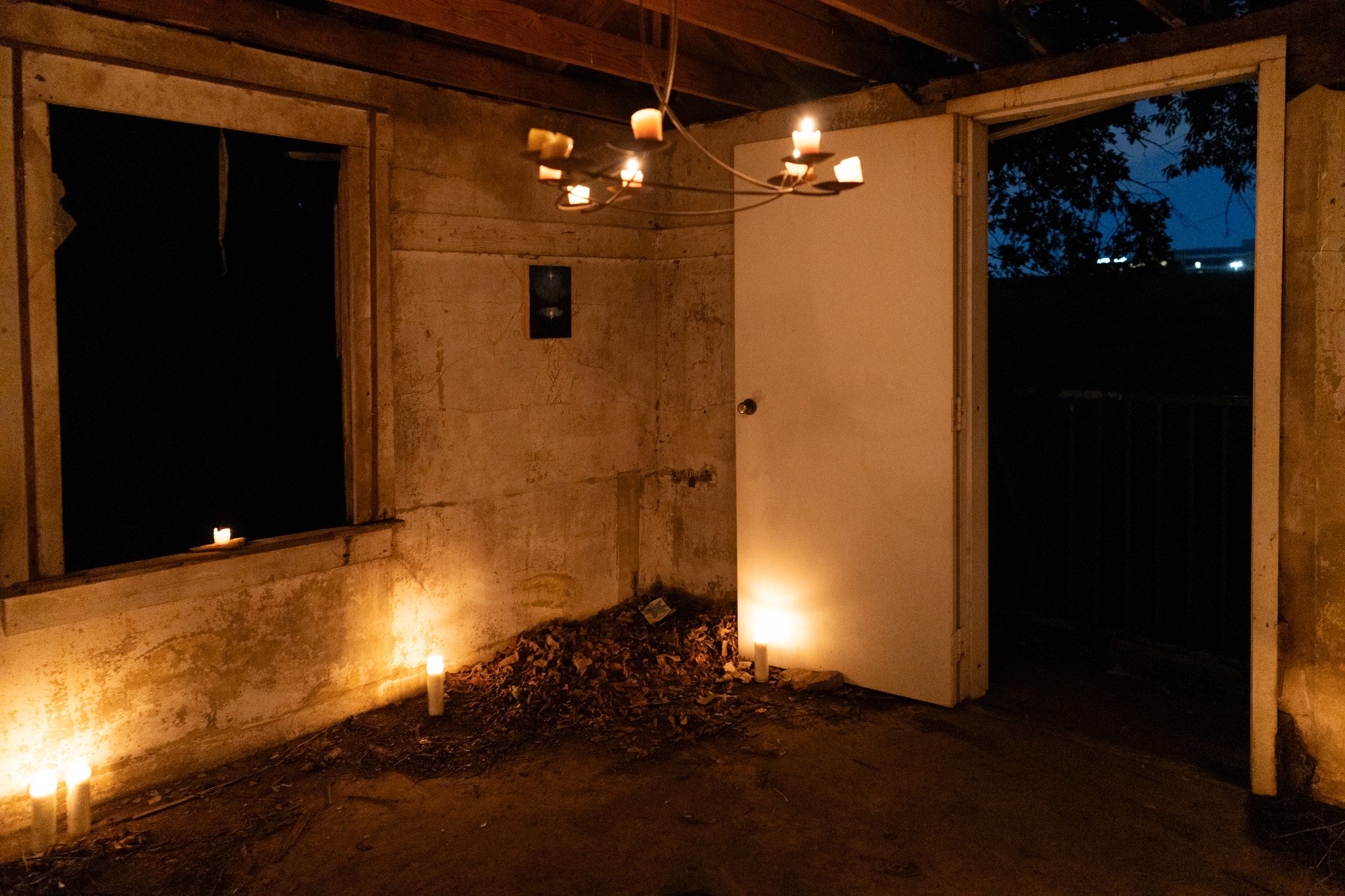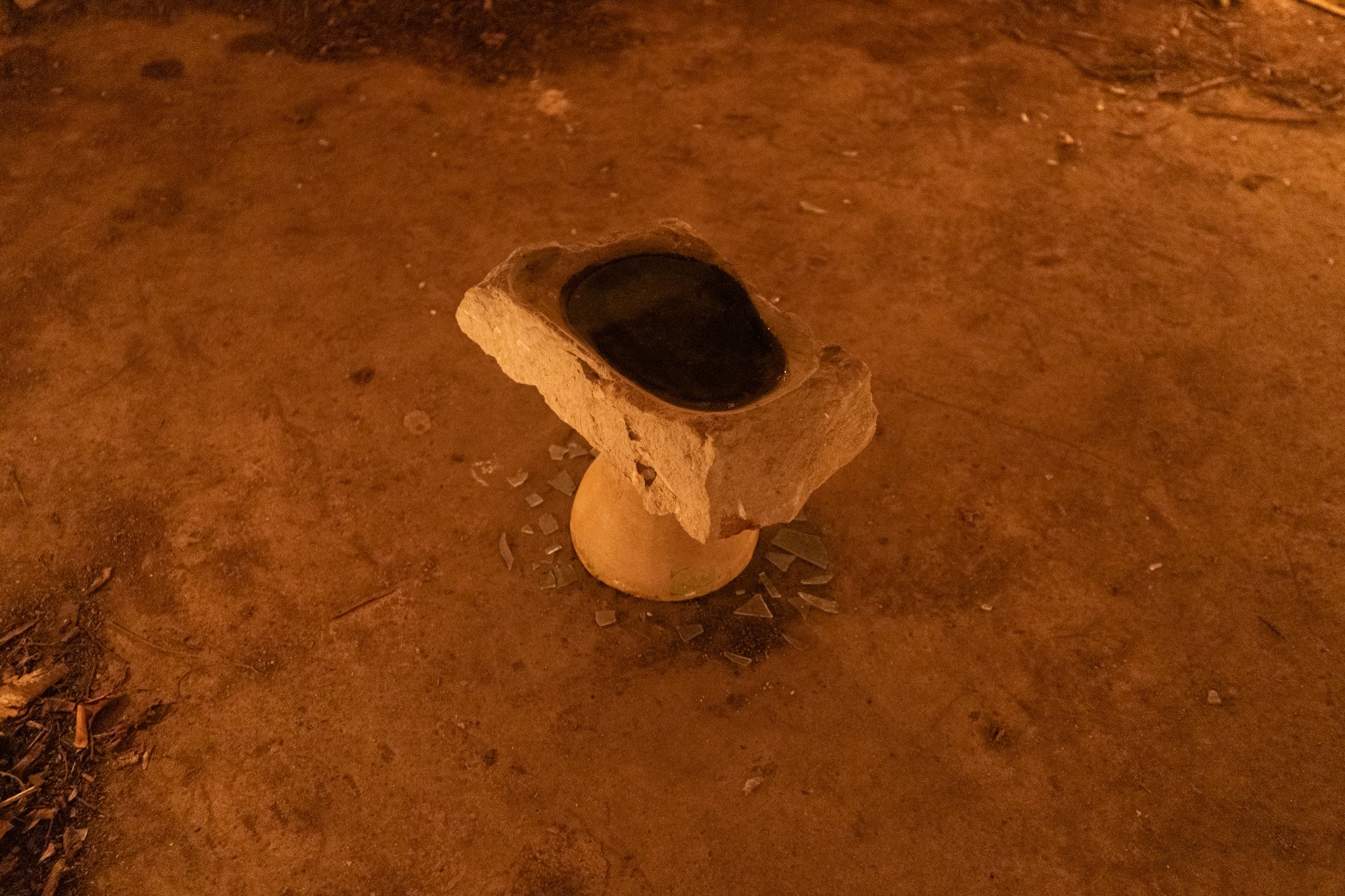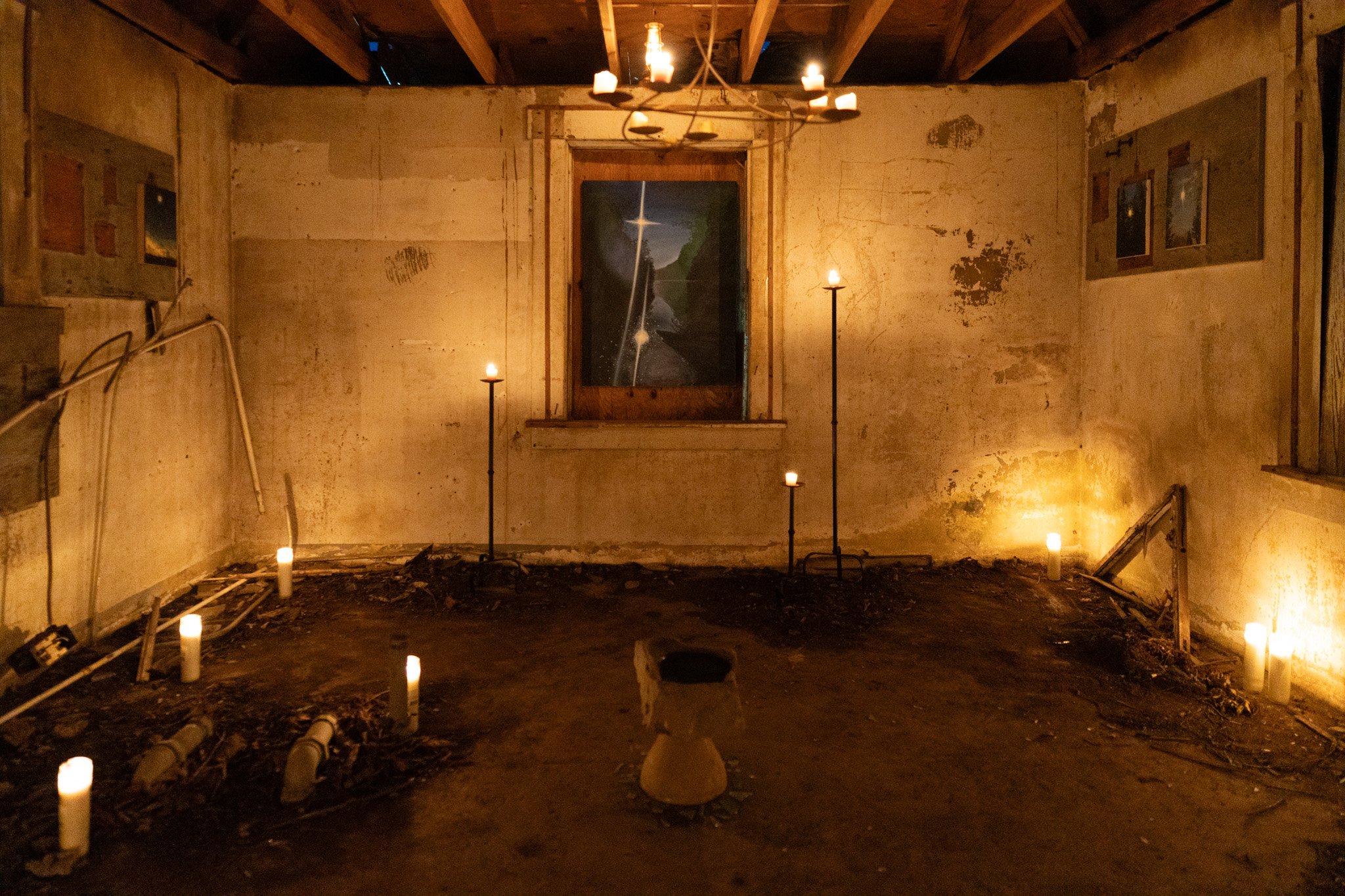
Off Site: Portals, Pathways, and the Spaces Between Us

Portals, Pathways, and the Space Between Us
June 29, 2025
Abandoned Pumphouse, Coldstream Park - Lexington, KY
Portals, Pathways, and the Space Between Us, is an exhibition that explores placemaking, shapeshifting, and temporalities of Kentucky through the Ohio River. The river is a point of study and departure, its historical significance rooted in division and symbols of freedom. The river acts as both a border and a point of shared connection—the complexities of this contradiction are unique to Kentucky, revealing the nuances of placemaking and identity. Anthropologist Kathleen Stewart states, “From the perspective of acts of place and its sensory materiality, place is something that throws itself together in moments, things, in aesthetic sensibilities and affective chargers.”
Placemaking transcends historical markers but is rooted in everyday occurrences, the buildup of relationships, colloquial sayings, and the environment, shared sentiments, or bodily gestures. This exhibition examines scenes of Kentucky placemaking that hold resonance, reverence, and vibrancy through texture, aural and oral signifiers, myths, and gestures that are specific to the region.
Thinking of movement, fluidity, ephemerality, and environmental activation, this exhibition consists of outdoor pop-up video exhibitions that take place throughout the state of Kentucky. The exhibition spans six venues across six cities in Kentucky, occurring once a month from June to November 2025. The traveling exhibition is composed of two videos and a soundscape that represent international and regional voices that interweave disruption and contemplation through placid yet subversive temporalities.
Sora Kim’s Turtle Walk (2010) depicts two performers walking through a densely urban landscape. The performers are obscured by large white disks they carry on their backs as they navigate a maze-like pathway of brick and concrete. In contrast to the industrial landscape of Kim’s work, Katinka Bock’s Couler un tas de pierres (2007) is devoid of overt human presence. A small boat carrying a mysterious mound of rocks gently floats down a river surrounded by dense trees. Despite the differences in urban and rural settings, the works hold an inherent slowness due to their ambiguous aimlessness. The nomadic wandering is further layered with a conceptual score by Britni Bicknaver and Brianna Kelly’s River Gaze (2024), in which the sounds of rushing water, steamboats, barges, and canoes interweave to evoke a cinematic soundscape—a soundtrack originally made to be listened to along the Ohio River.
This exhibition is malleable, and designed to activate sites specific to each venue. The presentation, atmosphere, and engagement changes as the three traveling artworks take different forms—projections on the foliage of trees to a performance along the river to a screening on an abandoned millhouse. The addition of local artist(s) per venue further expands the exhibition, highlighting the nuances of place and identity through each environmental activation.
– Sso-Rha Kang
Curator, The Carnegie
Rotating through six sites across Kentucky, Institute 193 was proud to be the Lexington-area partner for this exhibition. In addition to the video works from Sora Kim and Katinka Bock and an audio piece by Britni Bicknaver and Brianna Kelly, Institute 193 contributed the paintings of Lina Tharsing.
Tharsing’s paintings exist in a space between the tangible and the ephemeral. They capture the fleeting nature of light—how it shimmers on water, fractures through trees, and dissolves into the horizon—both present and intangible, just beyond reach. This transience mirrors something deeper: a meditation on presence and absence, on grief, and on the liminal spaces between worlds. Many of these paintings contain double moons—the moon itself and its reflection, equal and opposite. Drawn to the brilliance of the reflection, one might dive toward it, only to find it is not the moon, but a mirror. This illusion acts as a metaphor for loss: those we grieve remain with us, yet remain unreachable—both there and not there, their absence forming its own kind of presence.
